Greek Art and Archaeology Quiz 1!
1/93
There's no tags or description
Looks like no tags are added yet.
Name | Mastery | Learn | Test | Matching | Spaced |
|---|
No study sessions yet.
94 Terms
Archaeological things to know!
in the following notes
Law of Superposition
things farther down are typically older than things above
could be disrupted by human or natural things like animal burrows or natural disasters or roots or humans
in situ
when something is found in its original place
stratigraphy
the study of layers that accumulate over time in soil and reveals chronologies and sequences of events through objects
secondary deposition
when something is used in one place and left and then finally left in another
once again could be human activity or natural
absolute dating vs. relative dating
absolute dating uses specific years while relative dating dates time periods relative to one another
absolute=radiometric dating like radiocarbon or coins or dendrochronology
relative=stratigraphy
People to know!
in the following notes
J.J. Winckelmann:
father of art history
really liked greek classical art thinks its the best
18th century critic (drew distinctions btwn greek+roman art)
Piet de Jong
illustrator
illustrated hetty goldman
think of that illustrious group of archaeologists and friends
he’s the reason we have a lot of portrayals of the ancient places and he’s the reason we portray ancient places a certain way
Hetty Goldman
female archaeologist
excavated Eutresis which is in mainland greece
established EH chronology
Arthur Evans
excavated
discovered linear B, an early form of Greek (deciphered in 1952) which was a huge intellectual feat
he excavated knossos
Herodotus
roman historian
he has an account of minos subjugating a lot of territory
Peoples to know!
Hittites
modern day turkey
theyre ahead of the curve so smart
Anatolia
Minoans
named after king minos
they love a lustral basin
they love bulls and acrobats and natural world inspiration but controlled nature
like for example in late minoan floral style pottery which turns nature into pattern
they love double headed axes
Myceneans
they are associated with violence
chariots
Places to know!
Sesklo
Dimini
Lerna
Knossos
Akrotiri
Gournia, Crete
Mount Juktas
Kopaic Lake
Cyprus
Sesklo
has late neotlithic vaguely human figurine
Dimini
incised neolithic pot
also big in late bronze age for myceneans
Lerna
agglomerative
fortified
big building called BG that gets made into house of tiles
Knossos
double headed axes
minoan
palace
griffin throne room,
horns of consecration
Akrotiri
LC town destroyed by volcanic eruption
its cooler and older than pompeii so its a bronze age time capsule
2 story houses, court yards, agglomerative plan, no central palatial structure
the wall paintings show heavy minoan influence - def similarities btwn the wall paintings in Knossos and Akrotiri
cycladic wall painting ship fresco remember this!
Gournia, Crete
LM town
excavated by harriet boyd hawes
its rare to find good farm land to lots of in crete lived on mountains
in LM we get household shrines so personal religion so we get the upward arms figurines
Mount Juktas peak sanctuary with zoomorphic figurines
Specific sites to know!
Francthi cave
House of the tiles
Troy
troy is the place we looked at to learn about the chronology of the middle bronze age
Francthi Cave
longest recorded continuous occupational sequence site in Greece
earliest sign of human settleent in Greece during Paleolithic
roughly 20,000-3,000 BC
in mainland greece pelopeneese
has obsidian which is volcanic glass
Troy
troy is the place we looked at to learn about the chronology of the middle bronze age
heinrich schliemann
iliad, odyssey
troy 1 and 2 were very fortified
troy 2 had potters and metals
troy 3 and 4 very short lived
troy 6 lasted into late bronze
troy has tells that’s why we know it has many layers of occupation
ceramic petrographer/petrography
description and classification of rocks
microscopic
ceramic petrographer looks at composition
agglomerative [architecture]
no specific order to things, clusters that form together into a city
obsidian
volcanic glass from milos
used to make seals and jars
traveling of obsidian helps us learn abt trade
“Neolithic Package”
domestication of plants and animals
sedentism
and why? feasting, climate change, carrying capacity of environment who knows!
neolithic people are founders of modern life and creative problem solvers
Sesklo and Dimini
excavated sites in thessaly
distinctive pottery and figurines
5300-3000 BCE
What do we have from them?
obsidian from milos
chipped stone tools
chert/flint
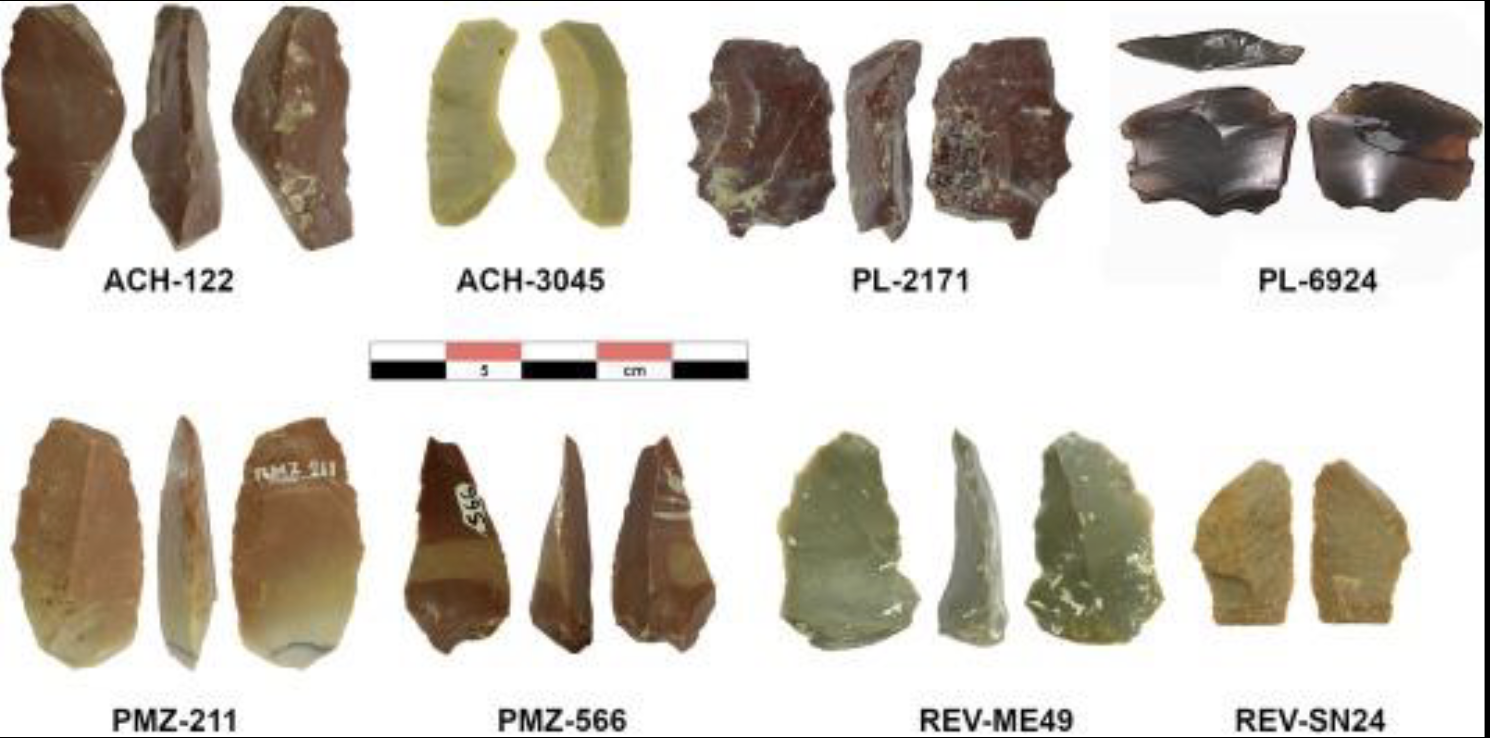
blades likely used for threshing grain in neolithic greece
commonly made of obsidian or chert aka flint
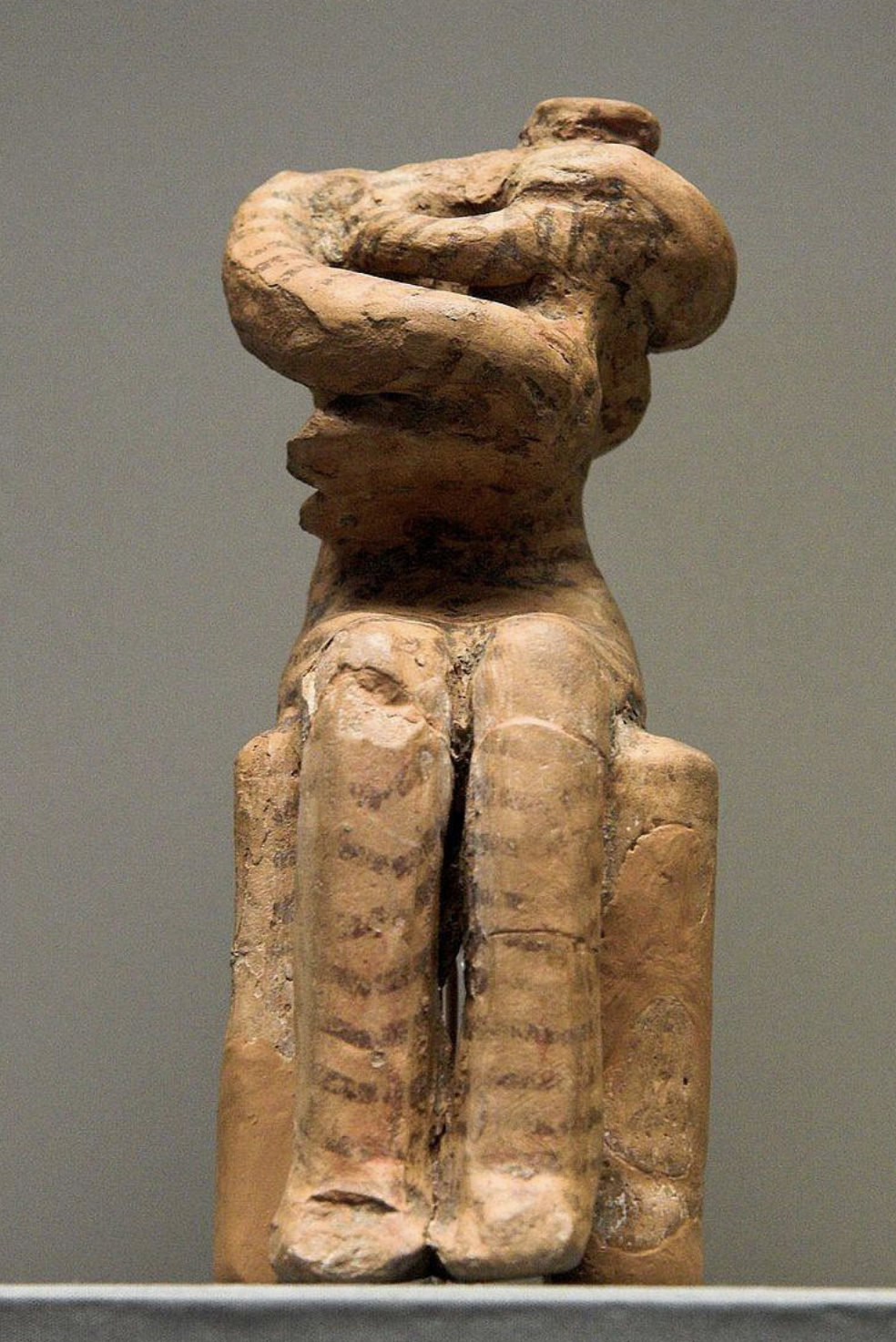
neolithic figurine from Sesklo
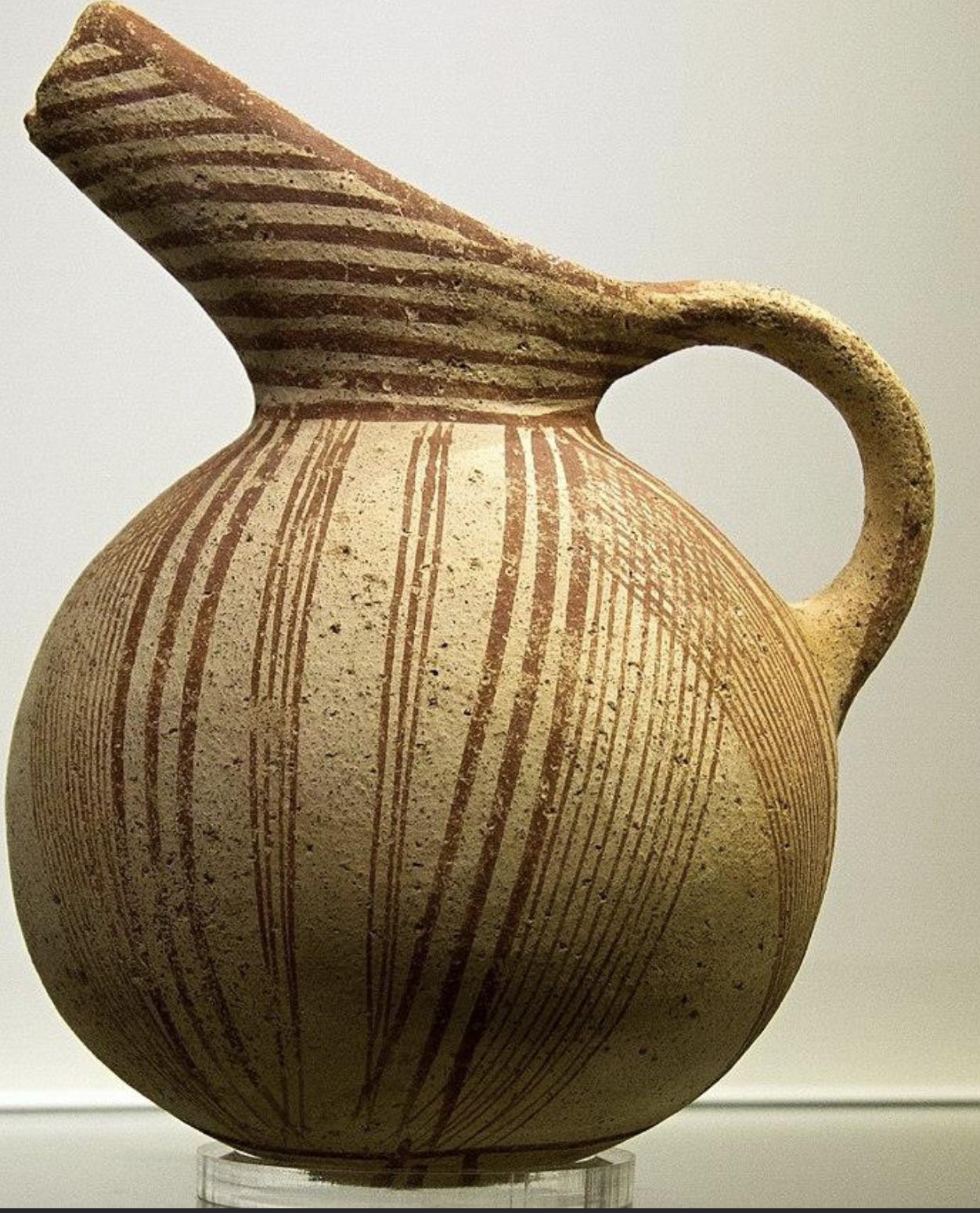
Aghios Onouphrios Ware
from crete
minoan culture
EM
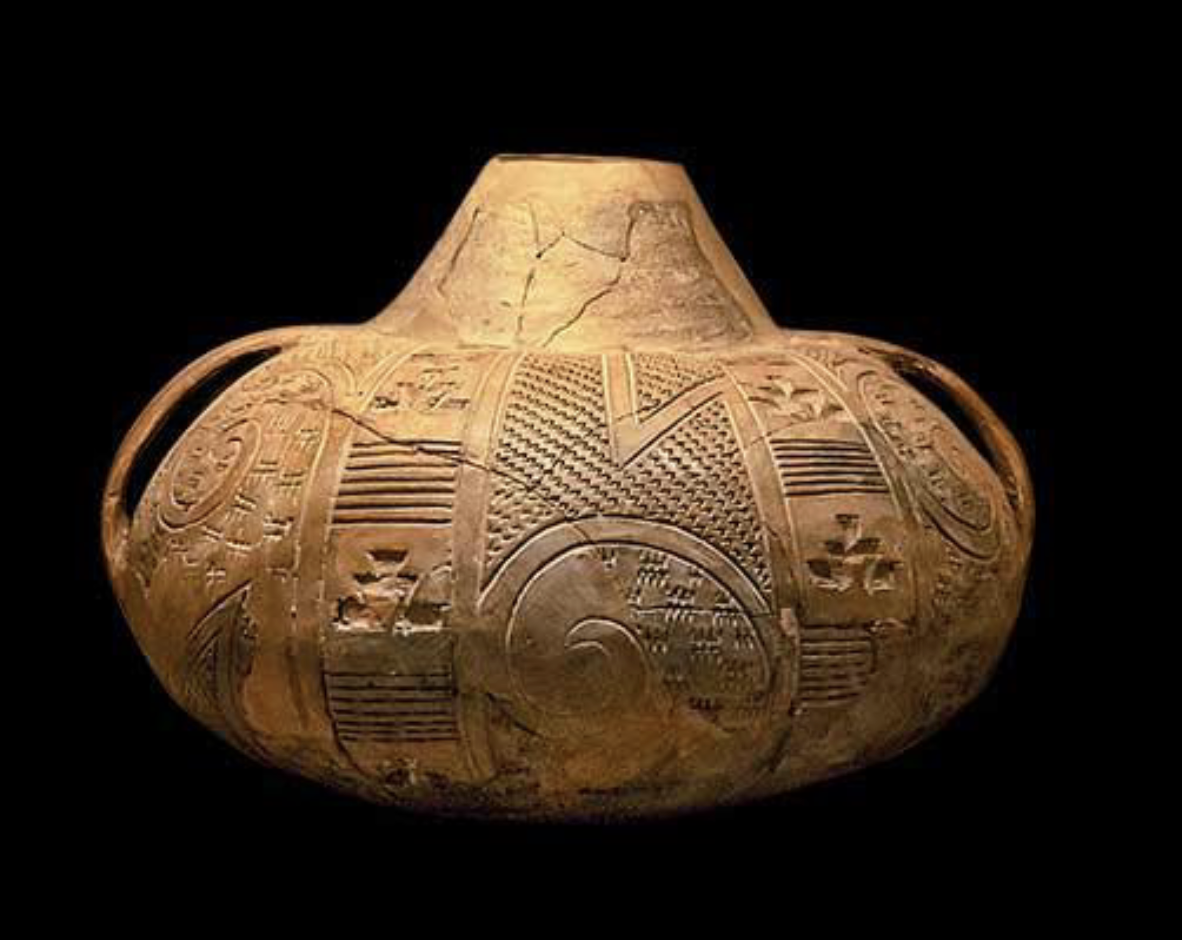
late neolithic pot from dimini incised
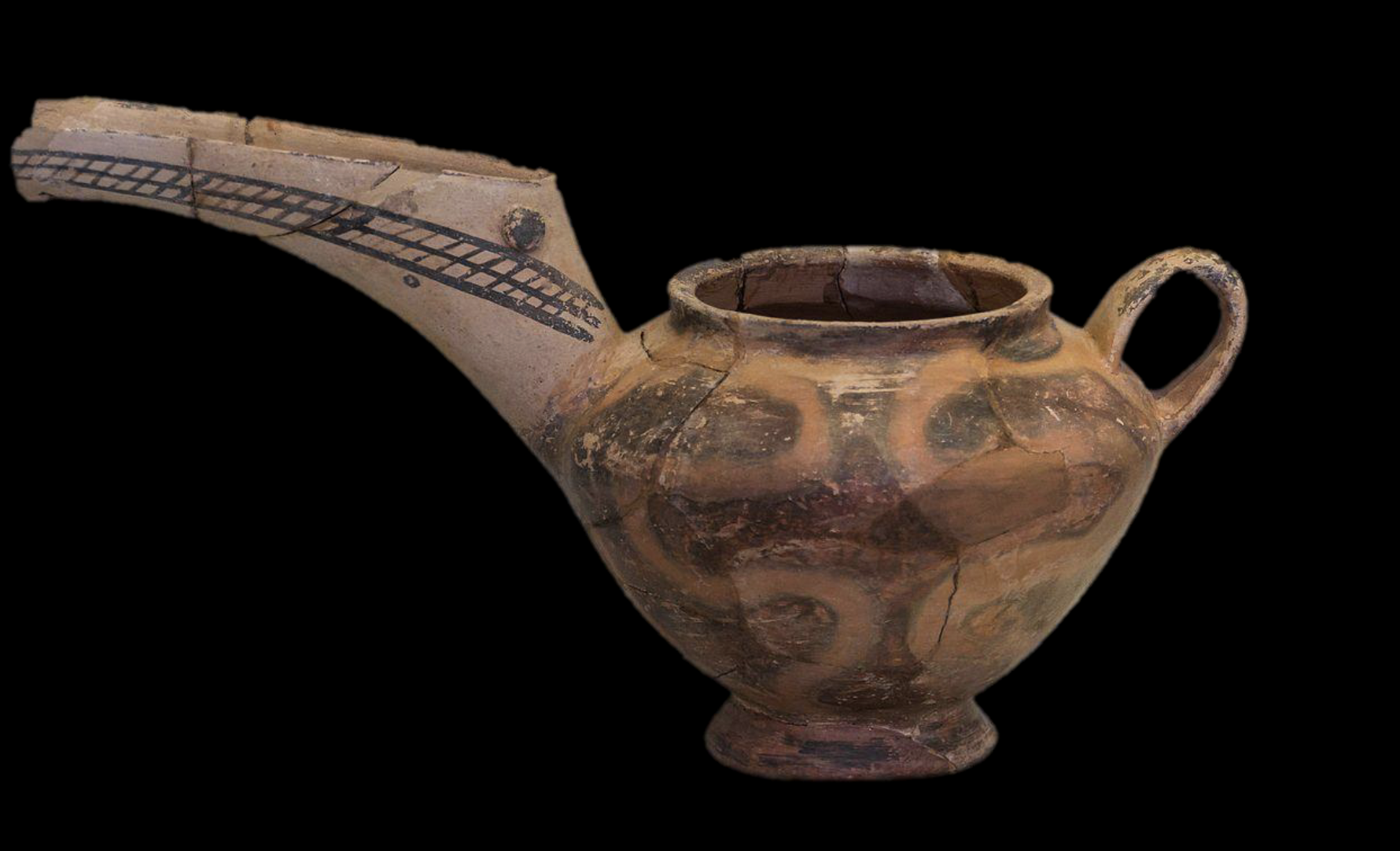
Vasilike Ware
from EM
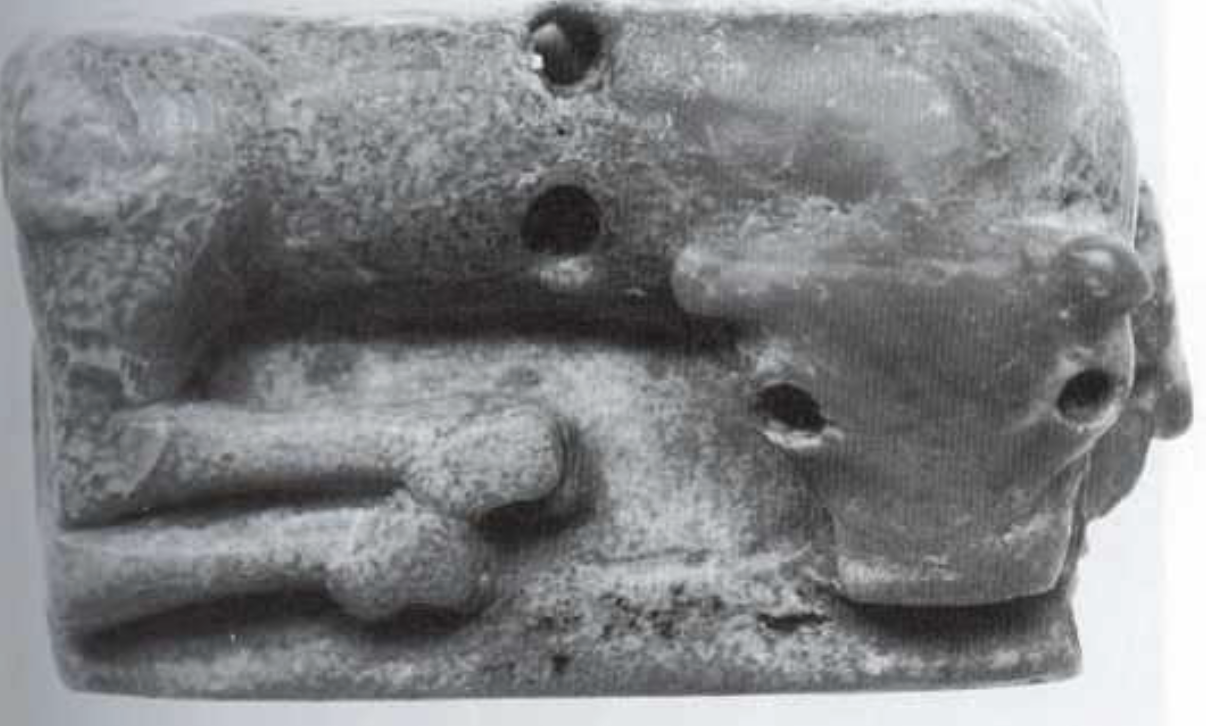
ivory stamp seal
EM
glyptic art so engraved
personal and official (like a signature)
for elite people
zoomorphic
animal like
think of Mount Juktas
glyptic art
engraved
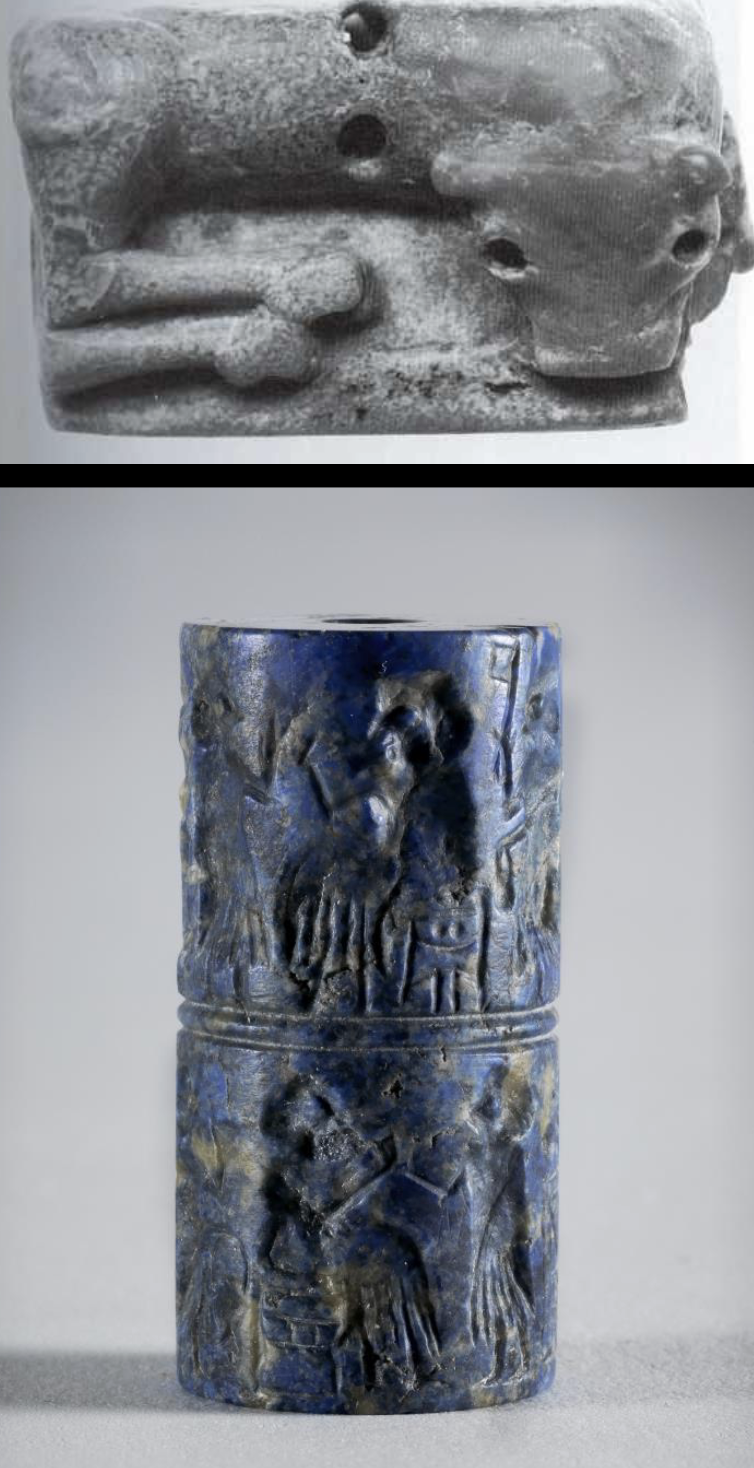
stamp seal vs cylinder seal
gurl this is pretty self explanatory
remember the lapis lazuli cylinder one
lapis lazuli
from afganistan

cycladic figurine EC
may be used in burials or domestic context
remember they love trangle body shapes
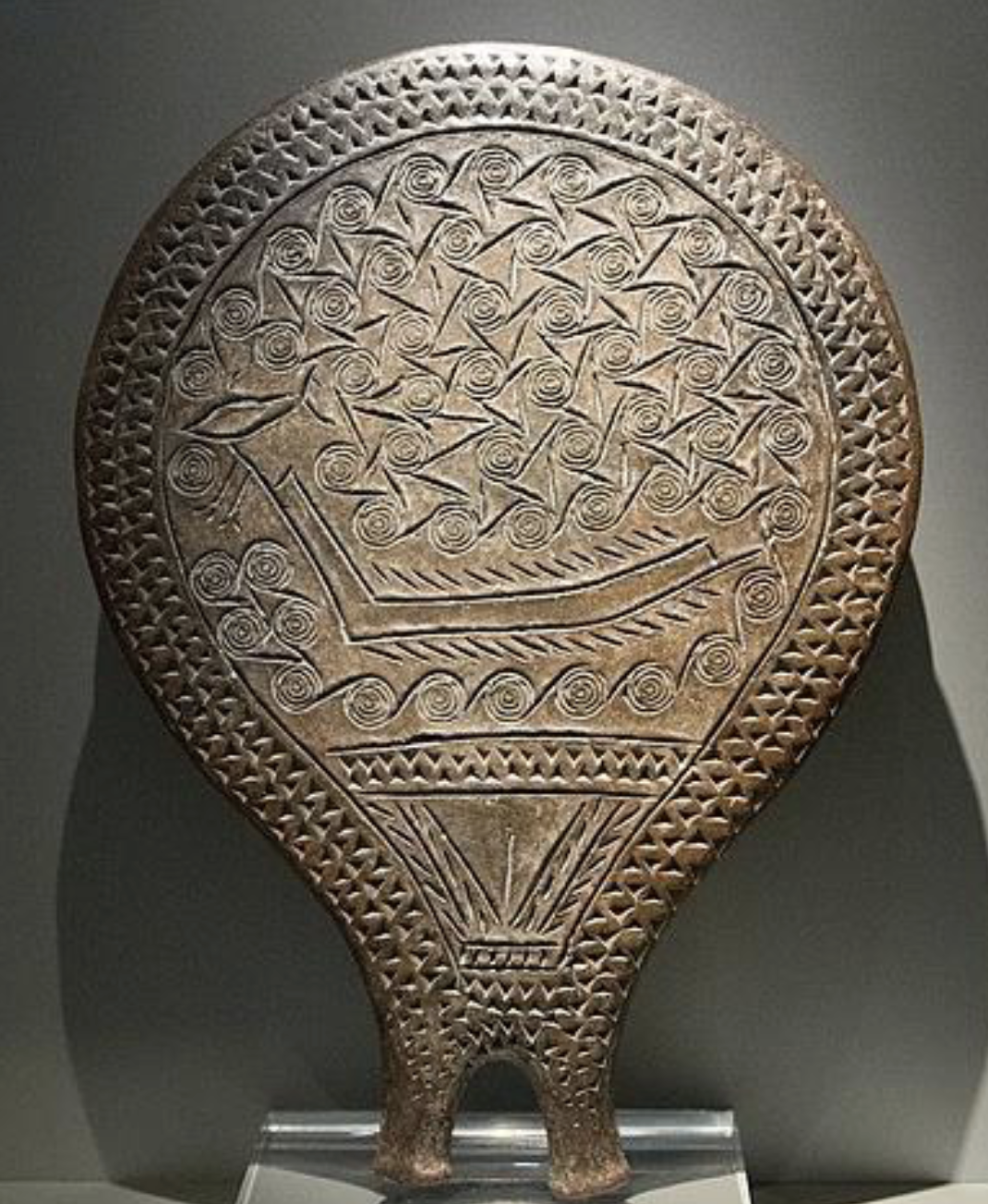
frying pan
EC
Syros
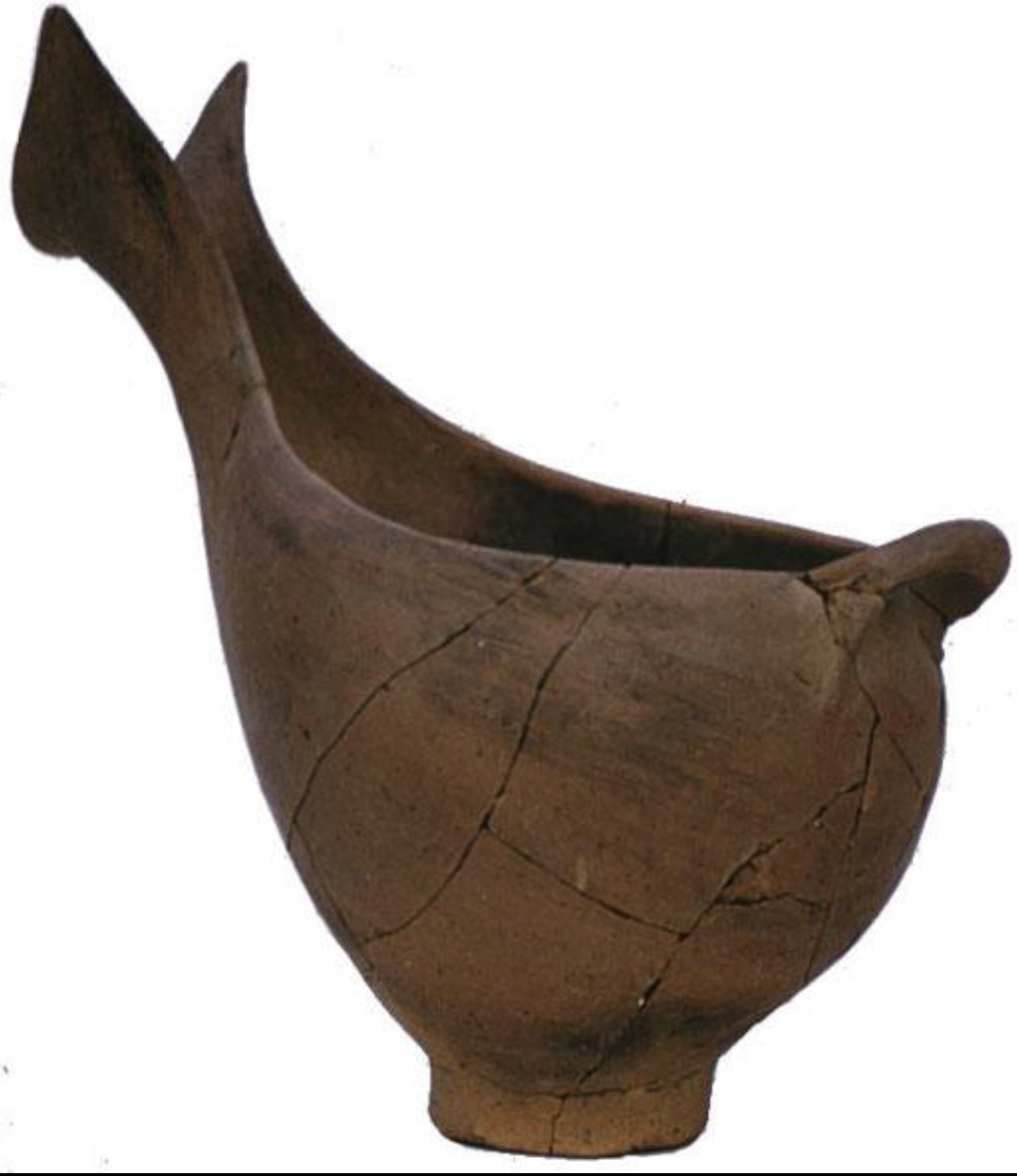
sauceboat
EH
Lerna
urfurnis/burnishing technique
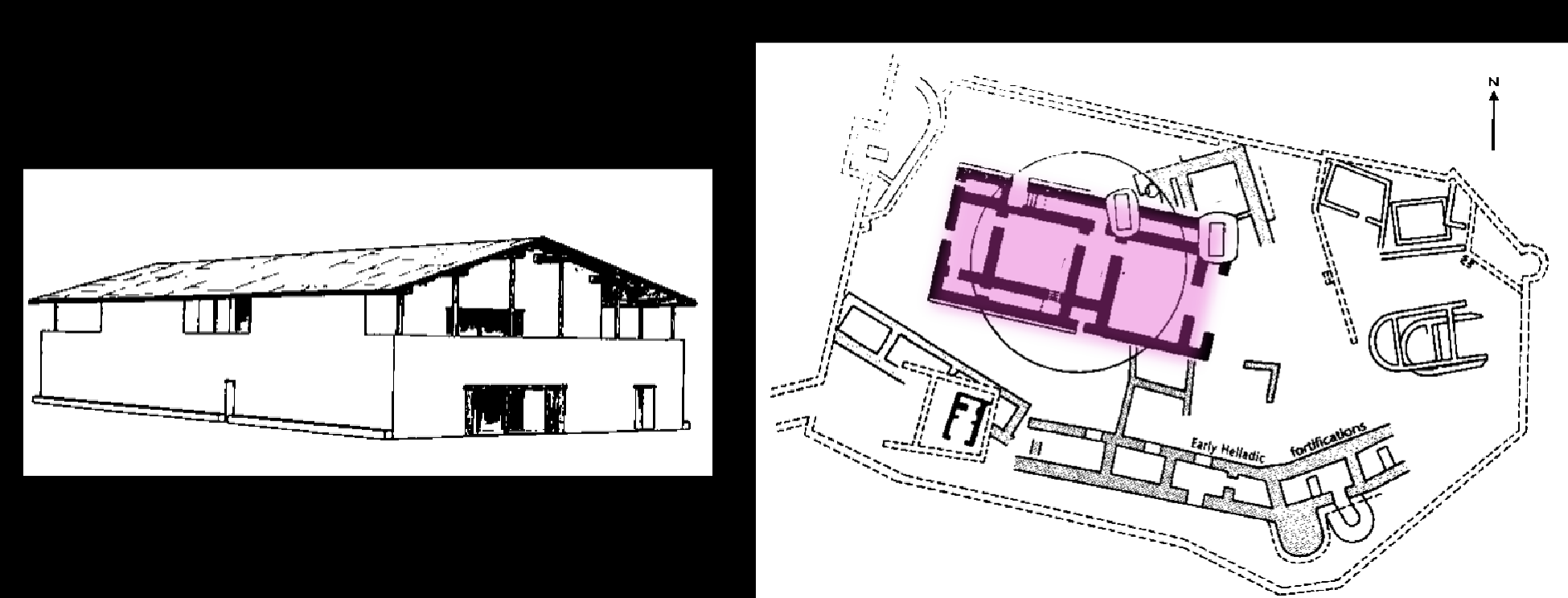
This is a plan of Lerna in EH that later turns into the house of the tiles
lerna was fortified and agglomerative
house of the tiles is the pink highlighted area and the tiled roof is super rare bc we don’t see tiles again until 1500 years later
corridor house that’s symmetrical and has stone foundation
what was it used for? storage like a granary? central administration? public center?
Hetty Goldman
eutresis
Eutresis
where hetty goldman excavated
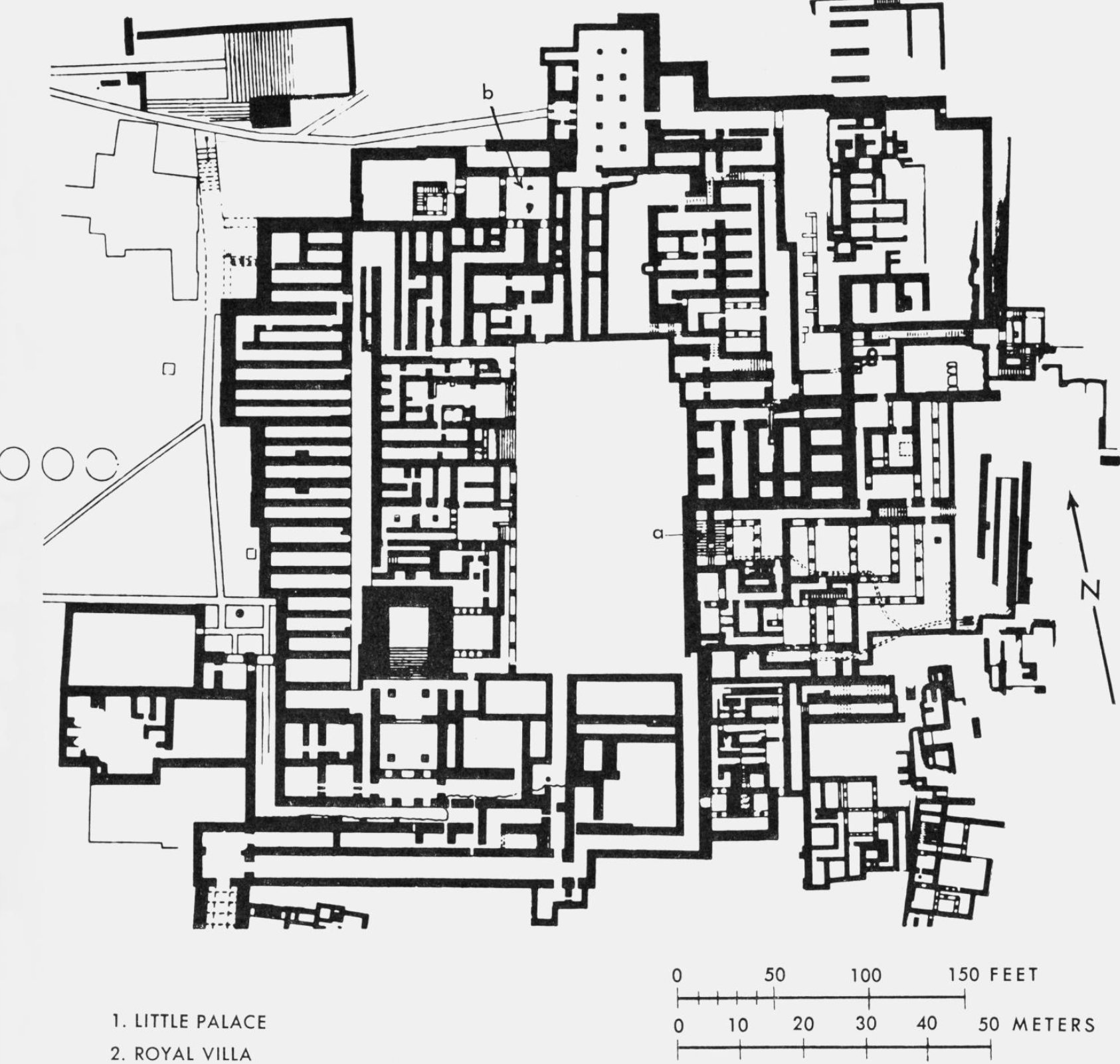
the palace at knossos plan
different places have different purposes like there are areas with ritual purpose, with domestic purpose, administrative purpose
admin + storage areas were og separate buildings that were linked together
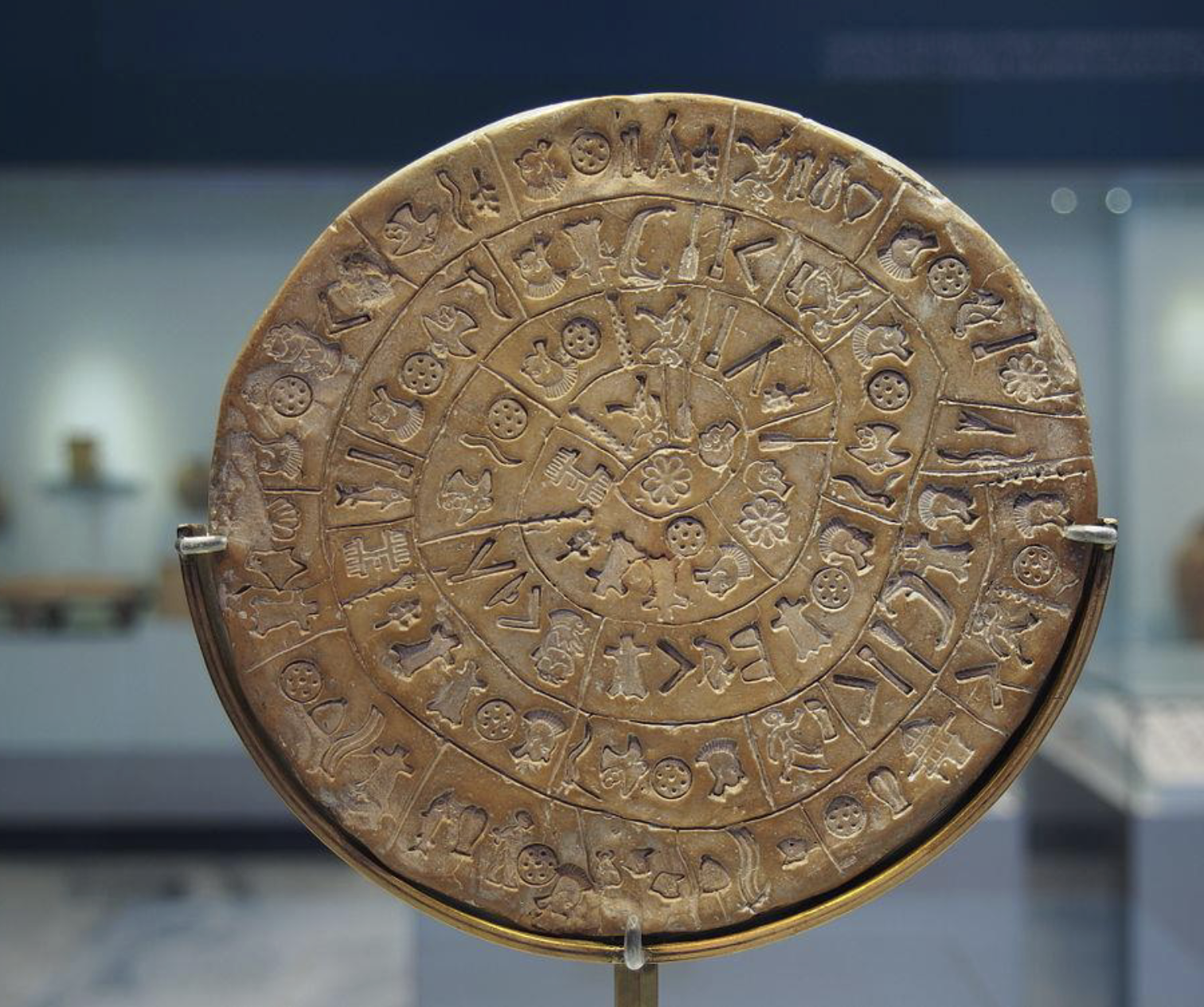
Phaistos disk
this has symbols similar to linear A on it, which was a Minoan script and is indecipherable as of present
MM oe LM
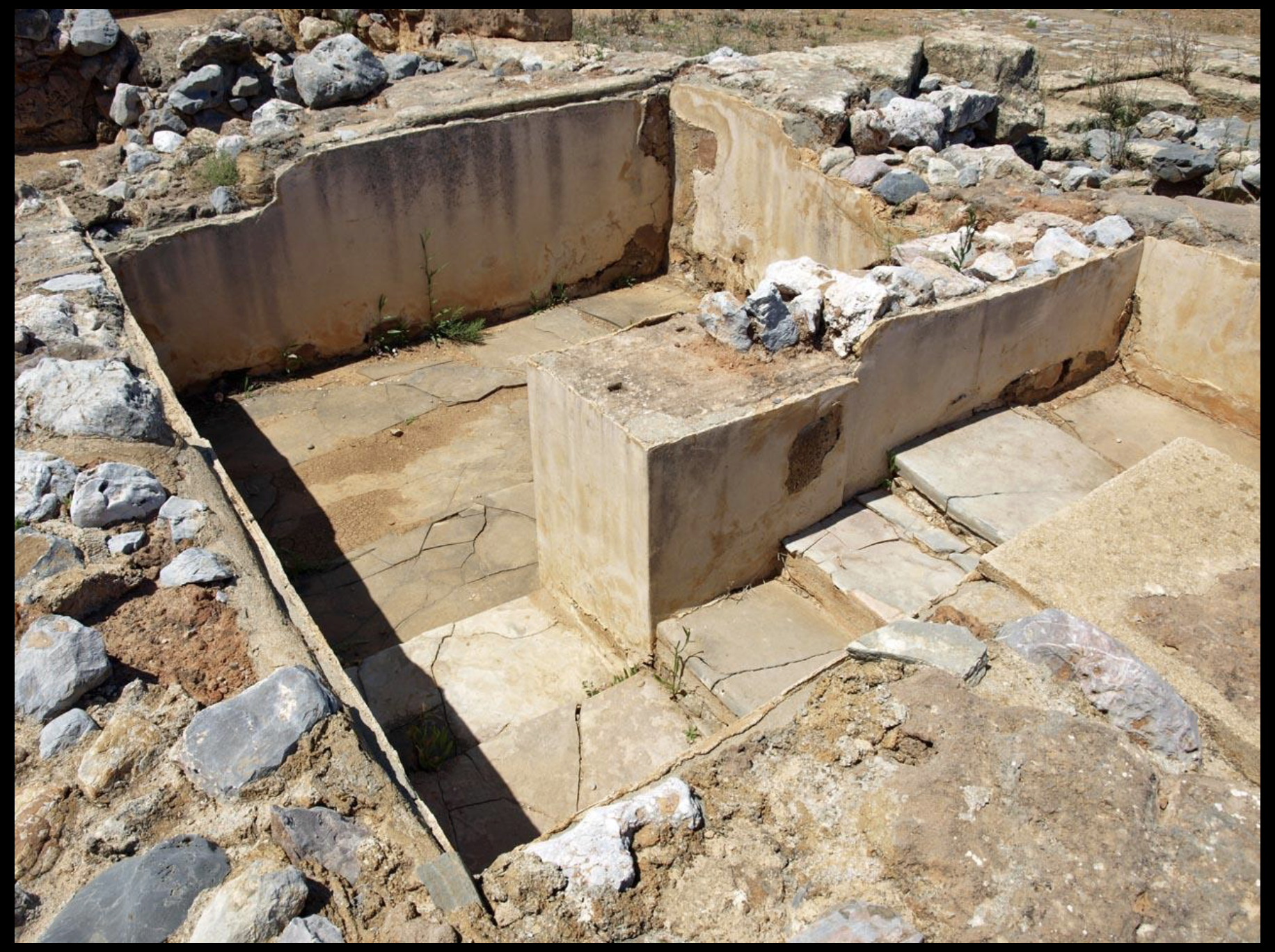
the lustral basin
in malia
there’s also one outside of Queen’s hall at Knossos palace
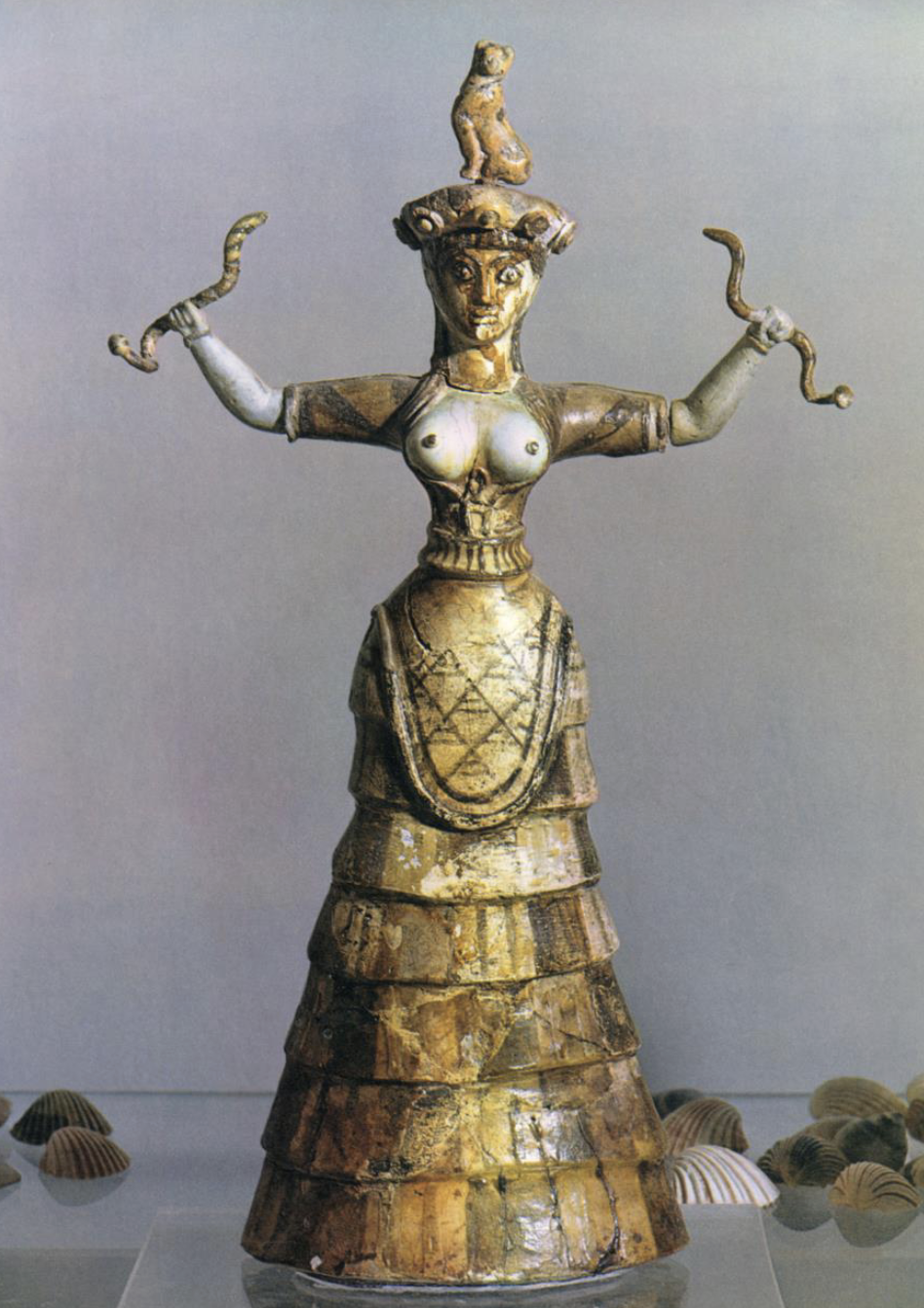
snake goddess
knossos MM
women and nature and snakes and shedding skin so transformation
mistress of animals trope
these figures are intricate and carved and in palaces so they are for the elite
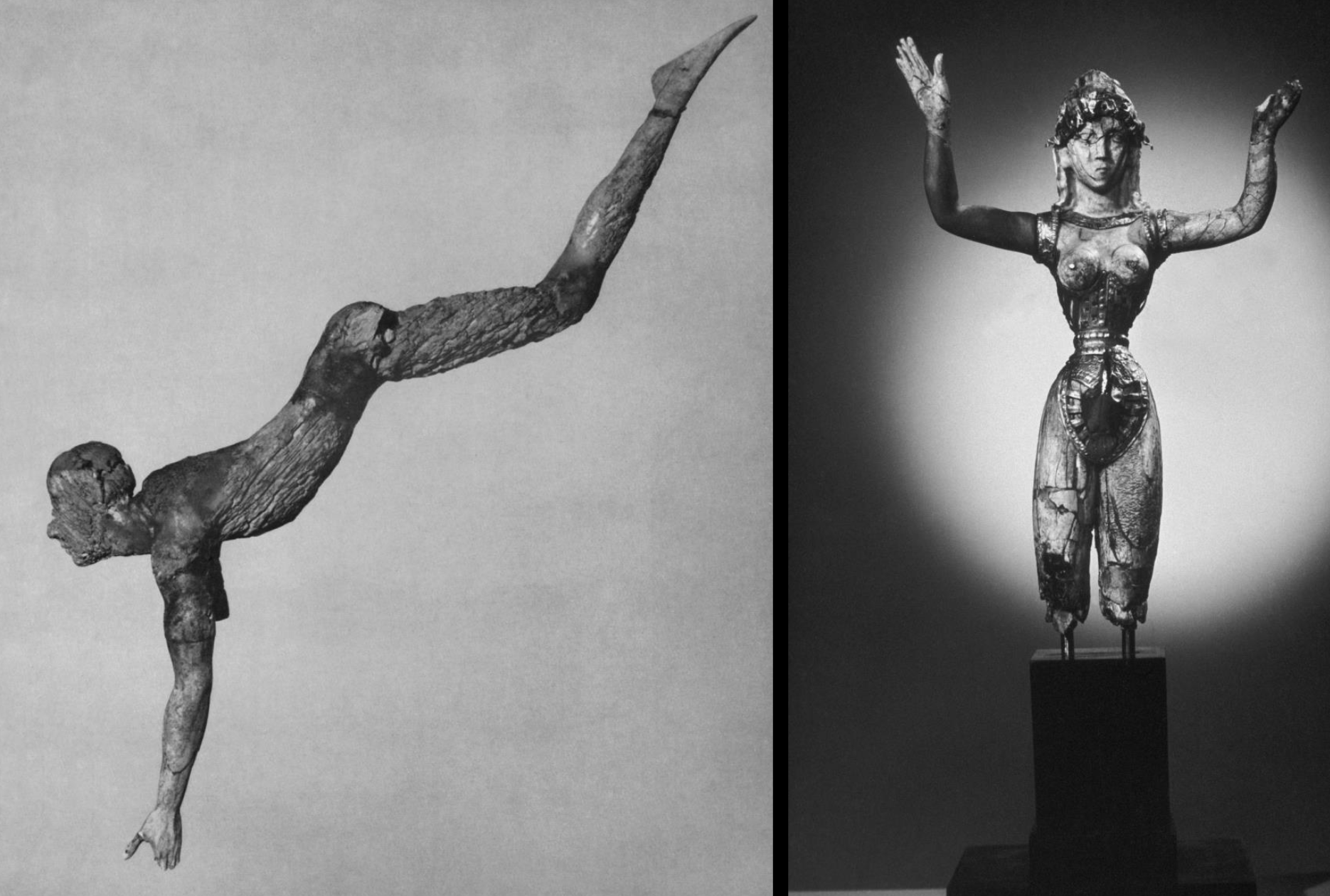
ivory acrobats
also knossos MM
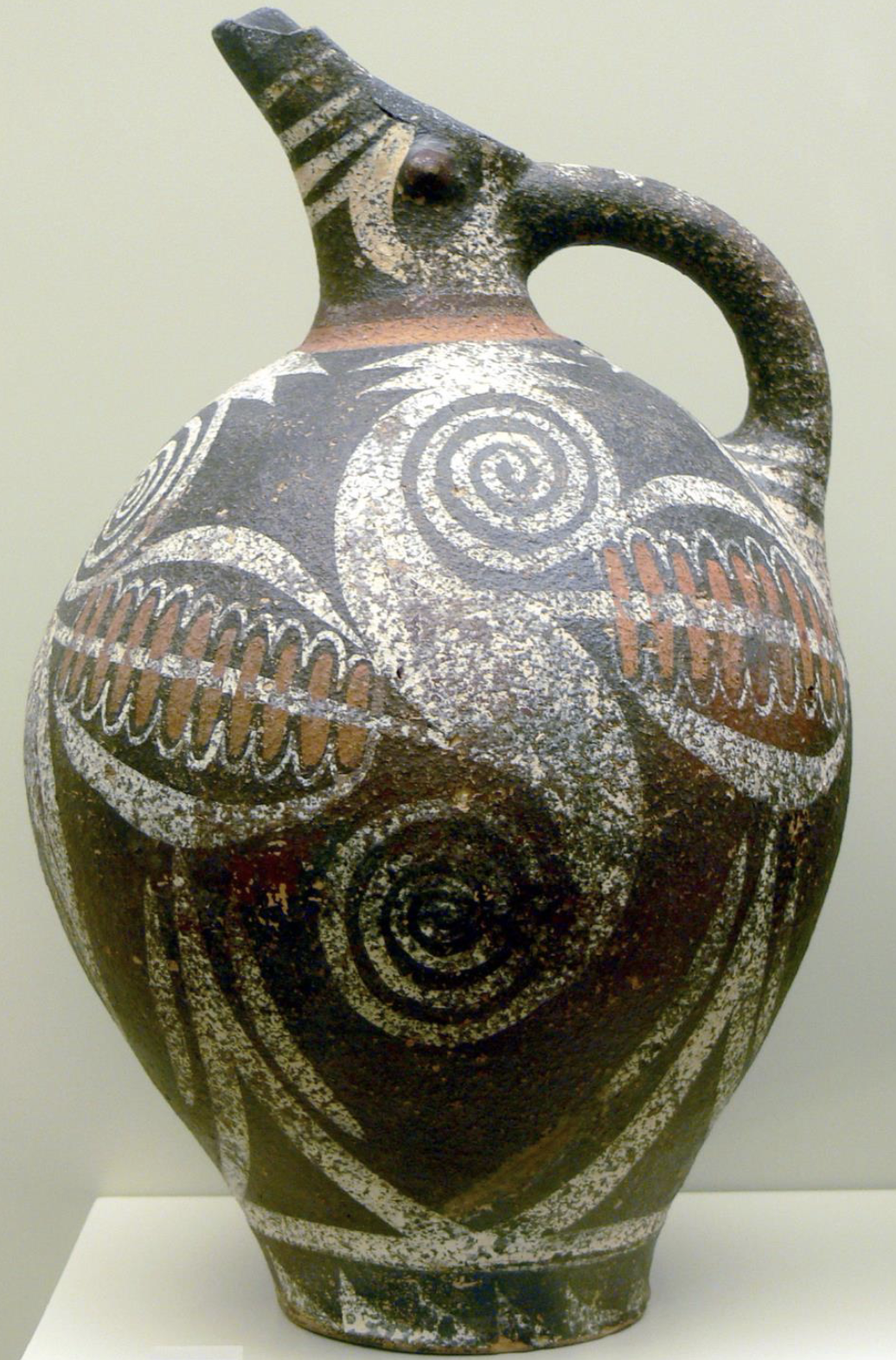
kamares ware
made on the wheel!
thin walled (eggshell) tableware vs. coarse for storage or pouring
from Phaistos MM
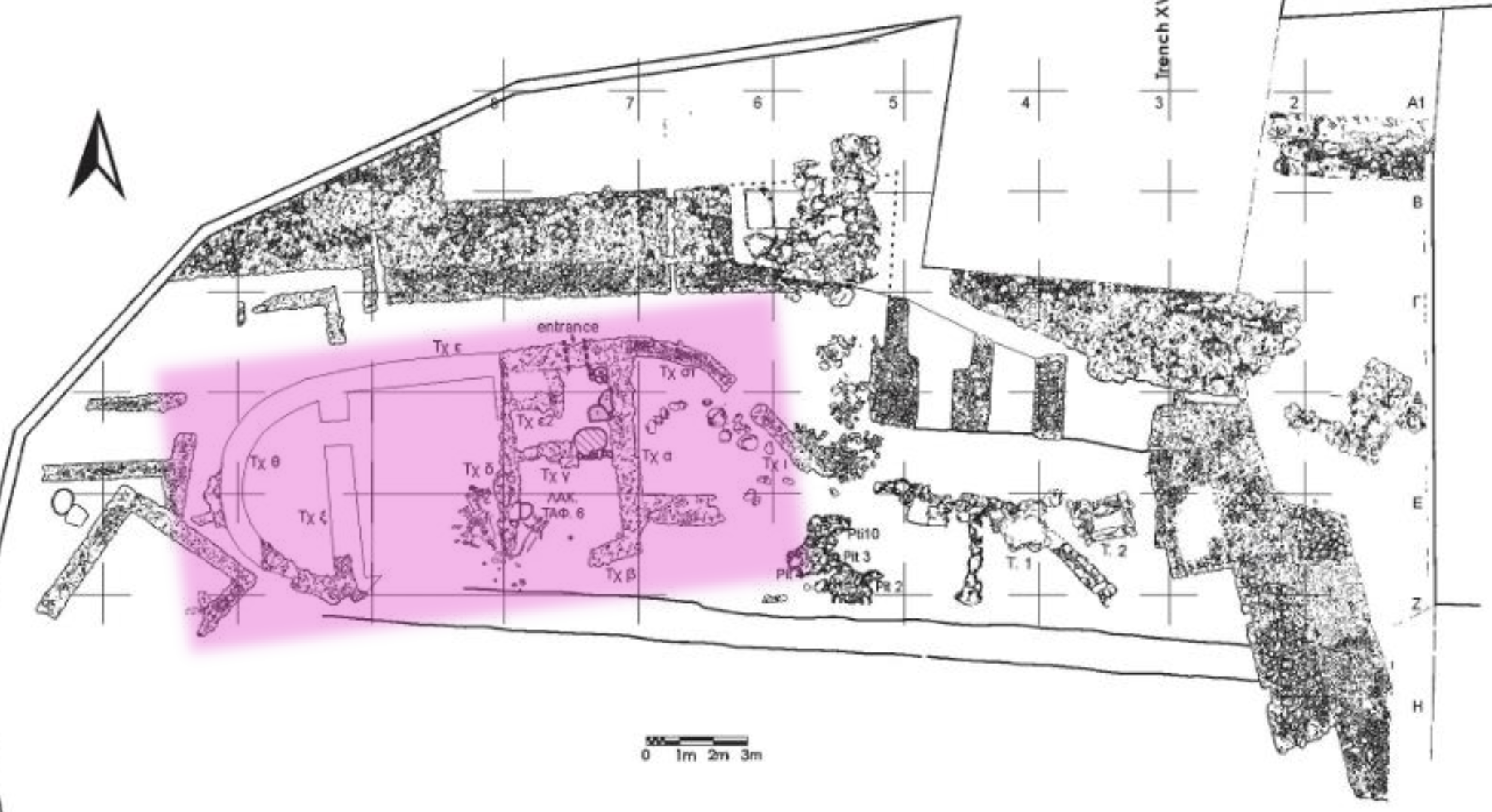
long house
apsidal (the one with the rounded end) or rectangular
thebes EH
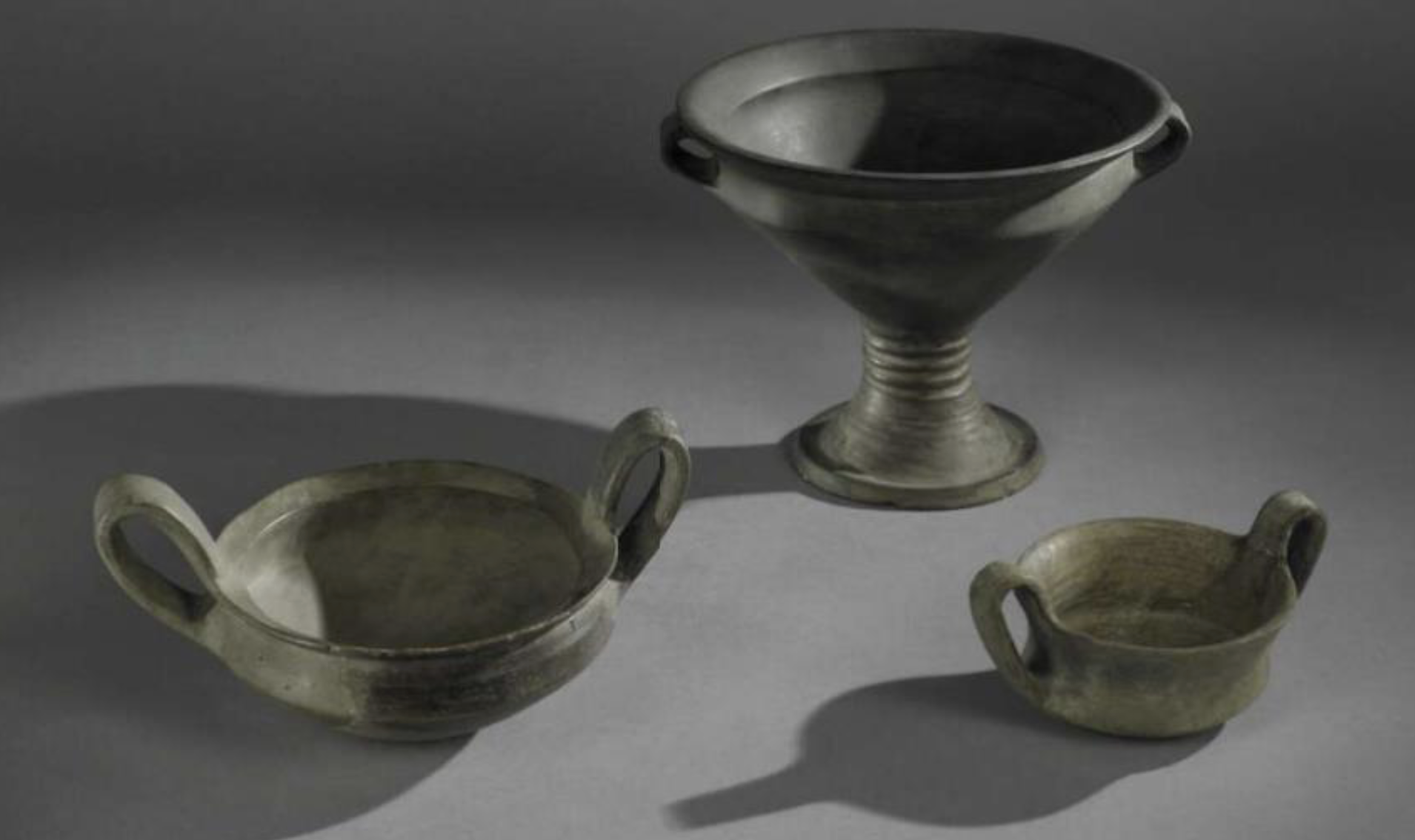
gray minyan ware
MH
minyan ware known 2b glossy, monochrome, fabric fired v hard, often bowls and goblets
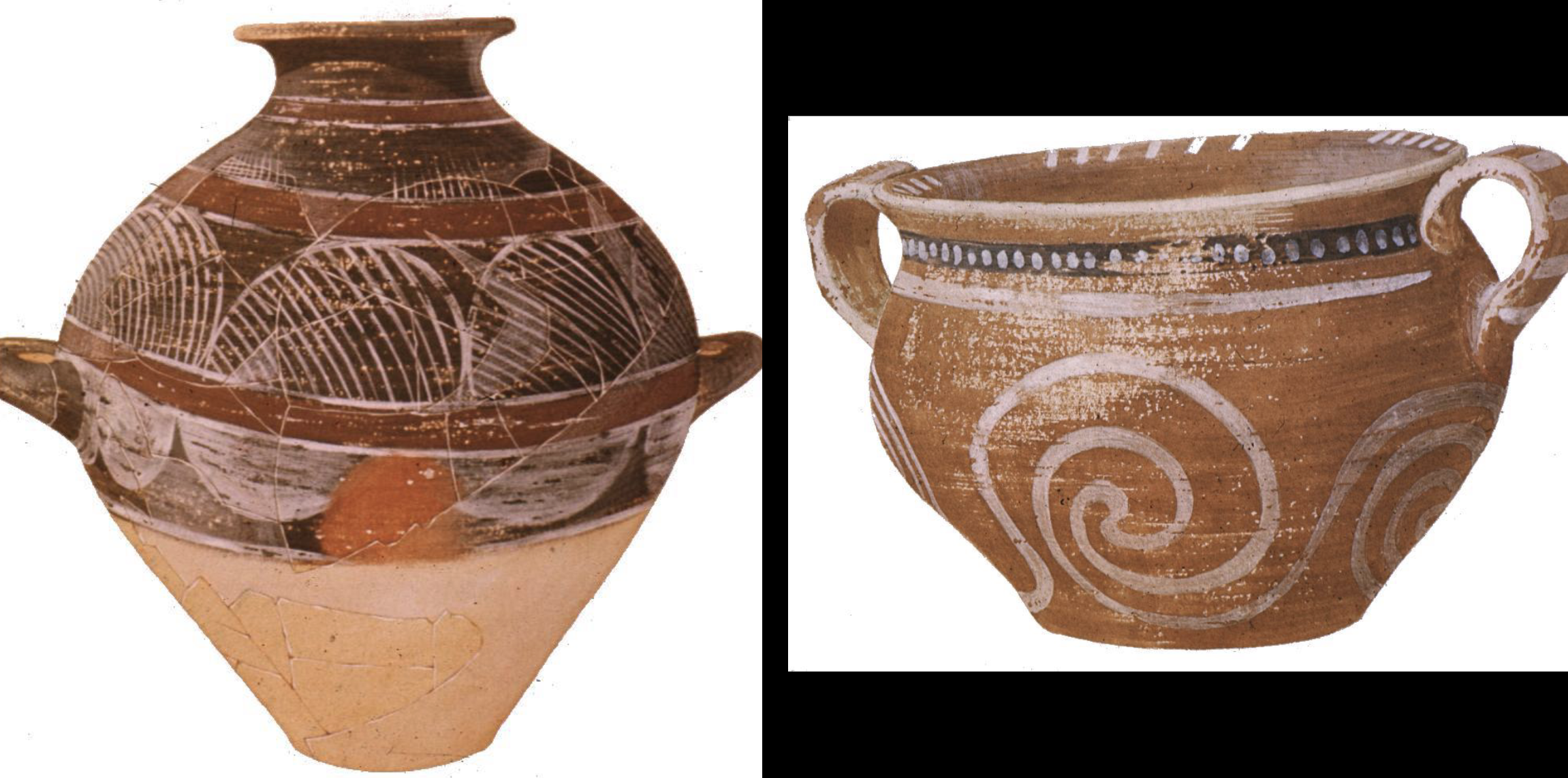
polychrome painted
- Lerna MH
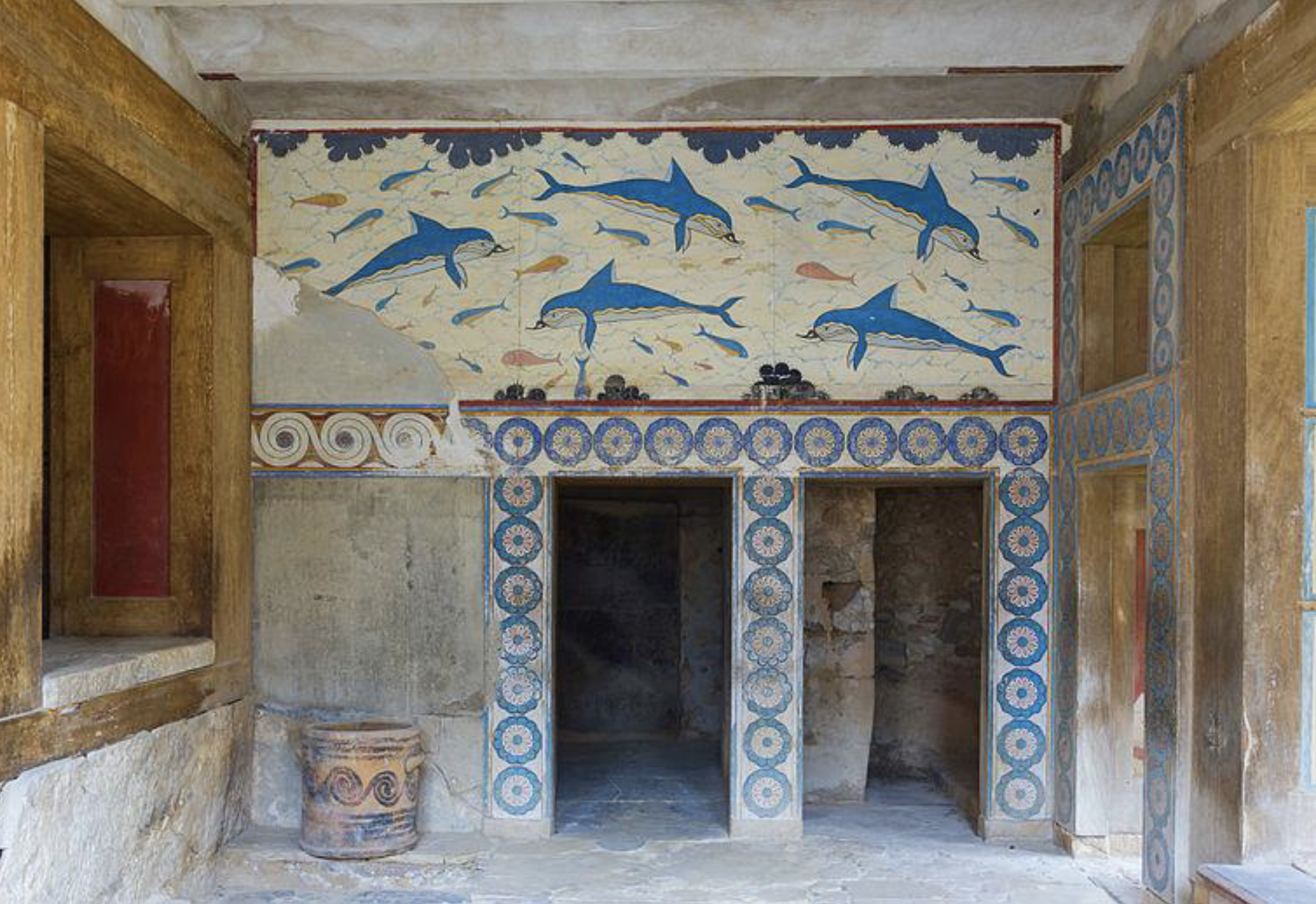
Queen’s hall
palace of knossos
look at the door and pier construction!
also think about organized nature!
we’re not sure if its true fresco (pigment directly applied to wet lime plaster) or if organic binding material was used
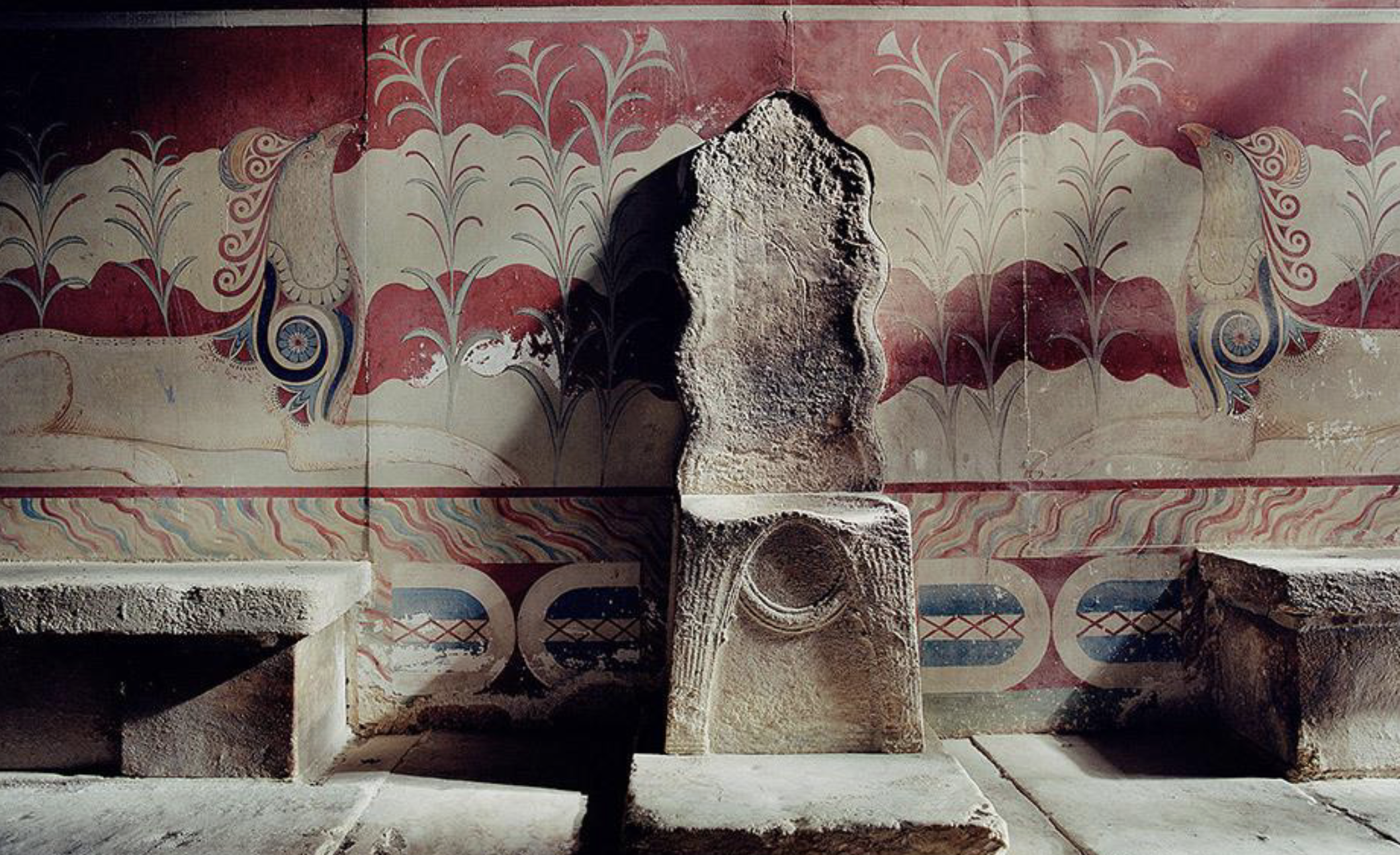
throne room
knossos palace again!
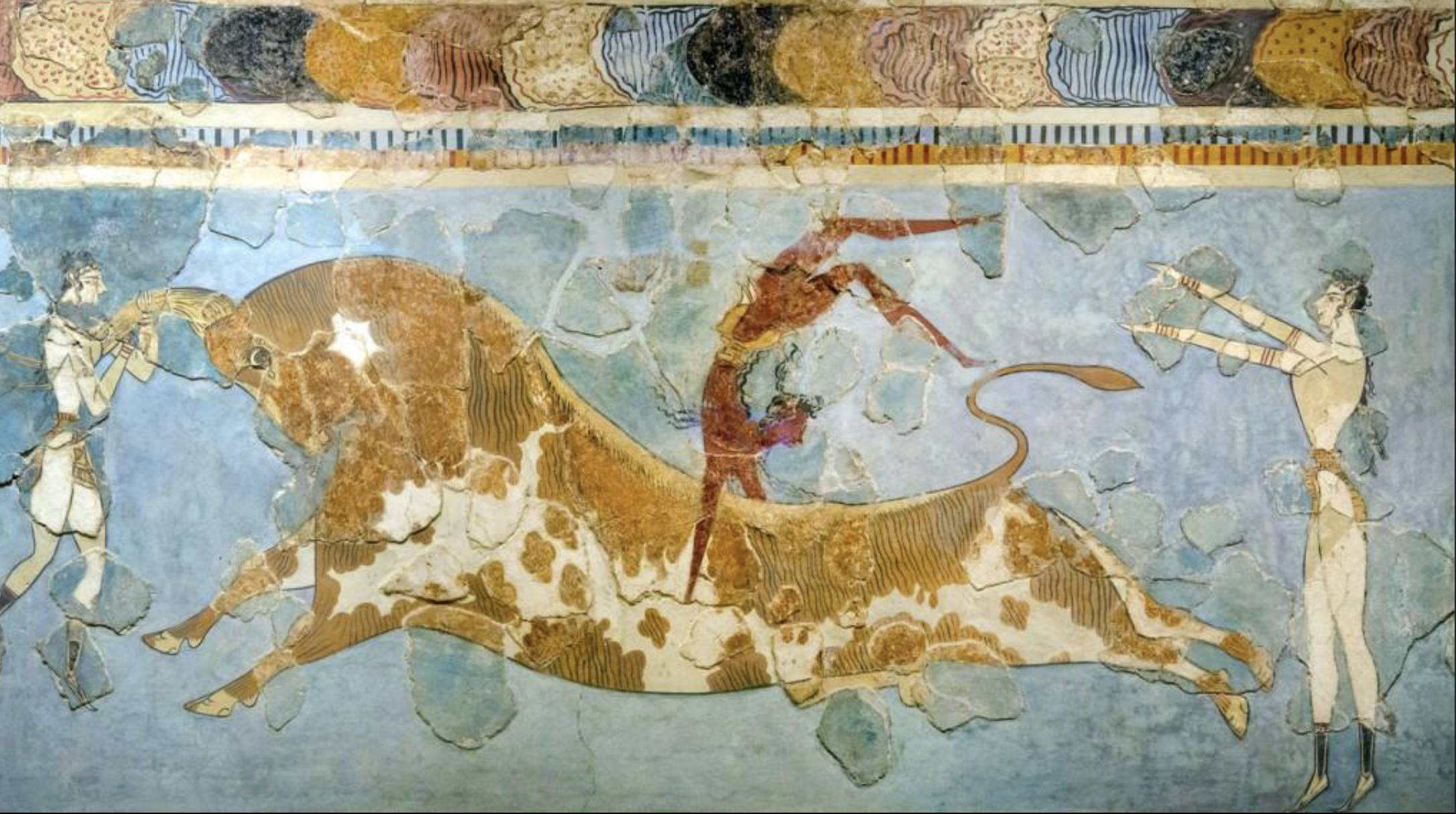
bull leaping fresco
palace at knossos - again!
reminds us of the acrobats so minoan they love the bulls
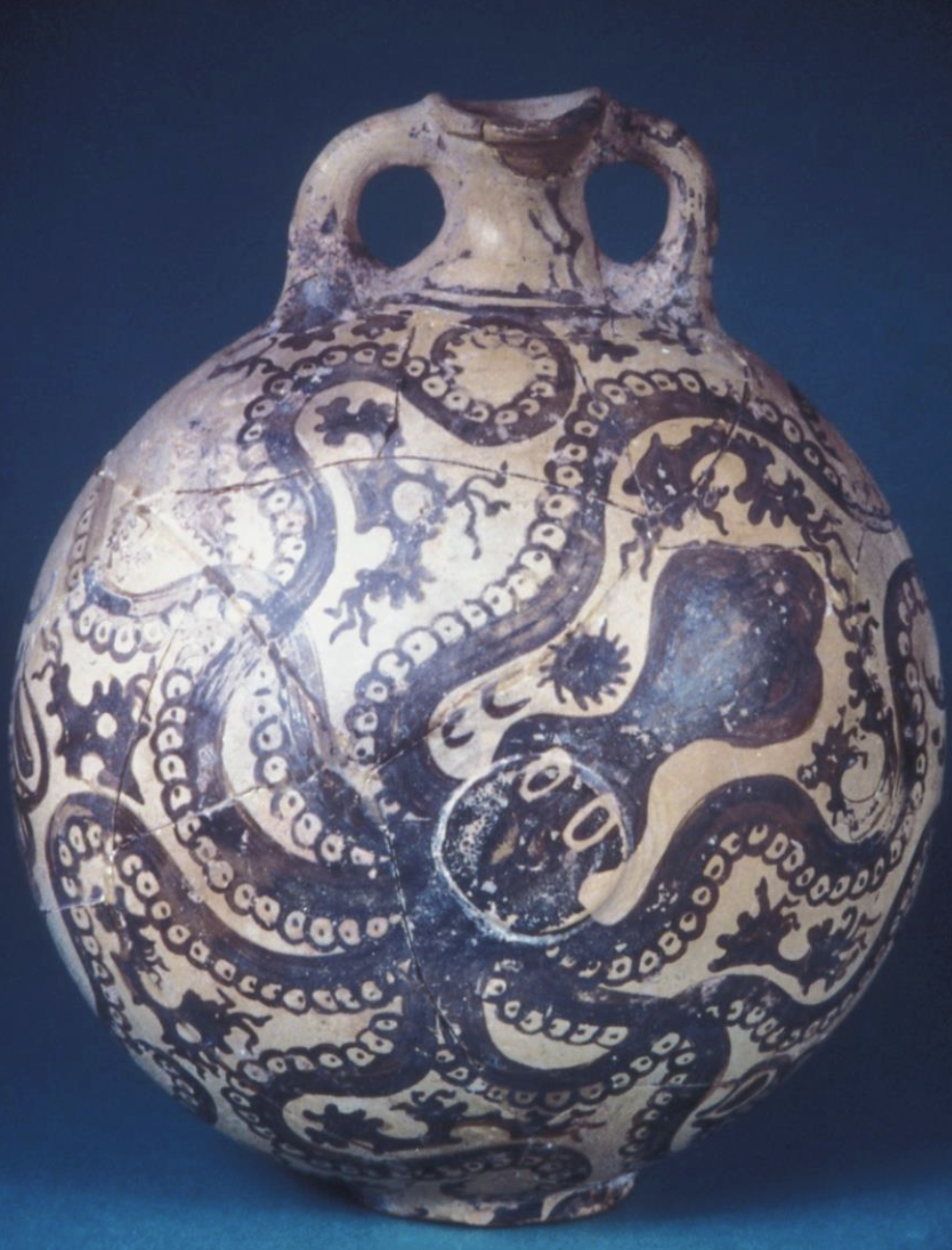
marine style pottery
LM
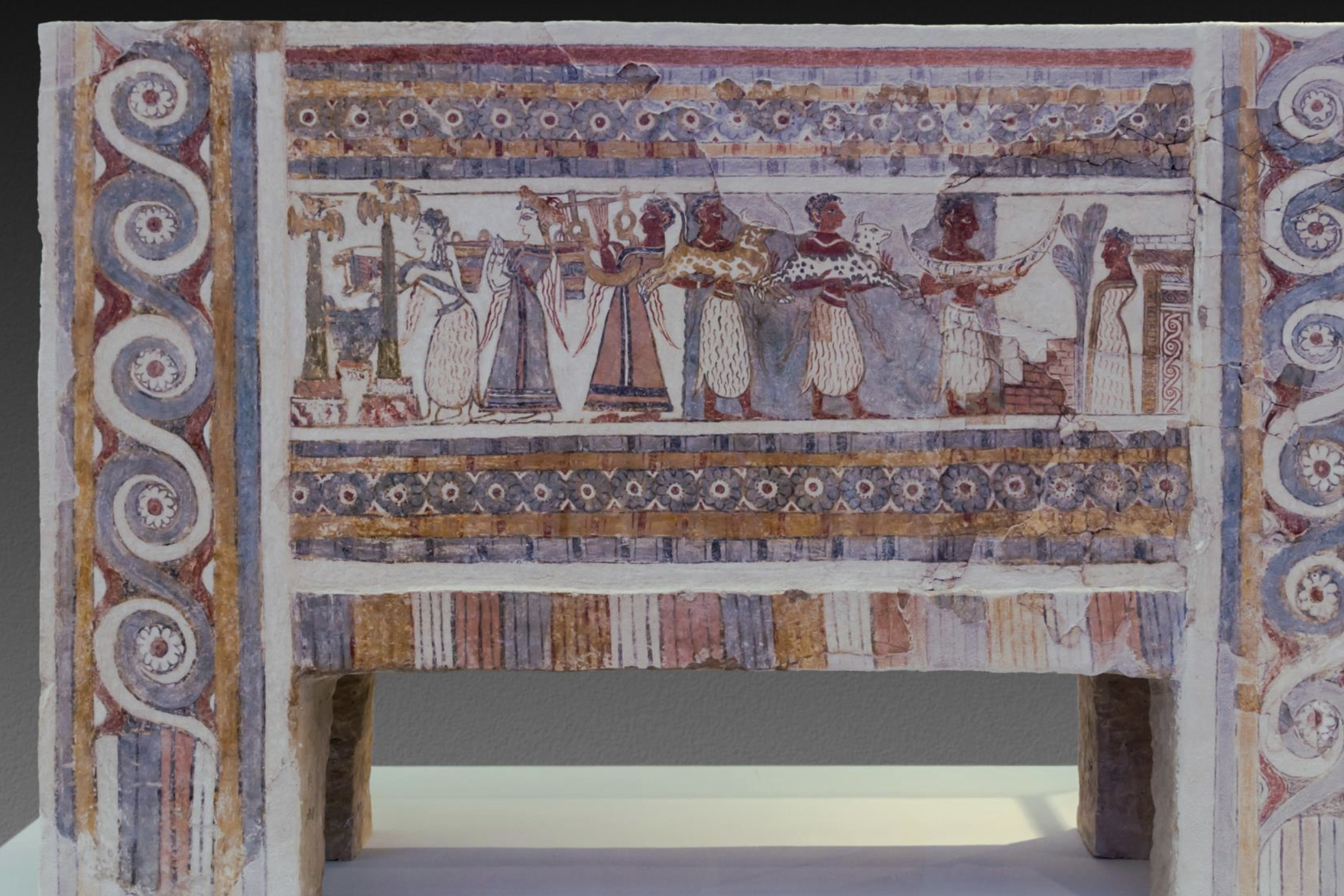
ayia triada sarcophagus
expression of power by mycenean elites in religious setting
this is when myceneans were moving to crete and exerting power! #colonizing?
gives us insight into religious rituals, death rites in Aegean bronze age
double headed axes are minoan while chariots are mycenean so blending of those cultures
LM
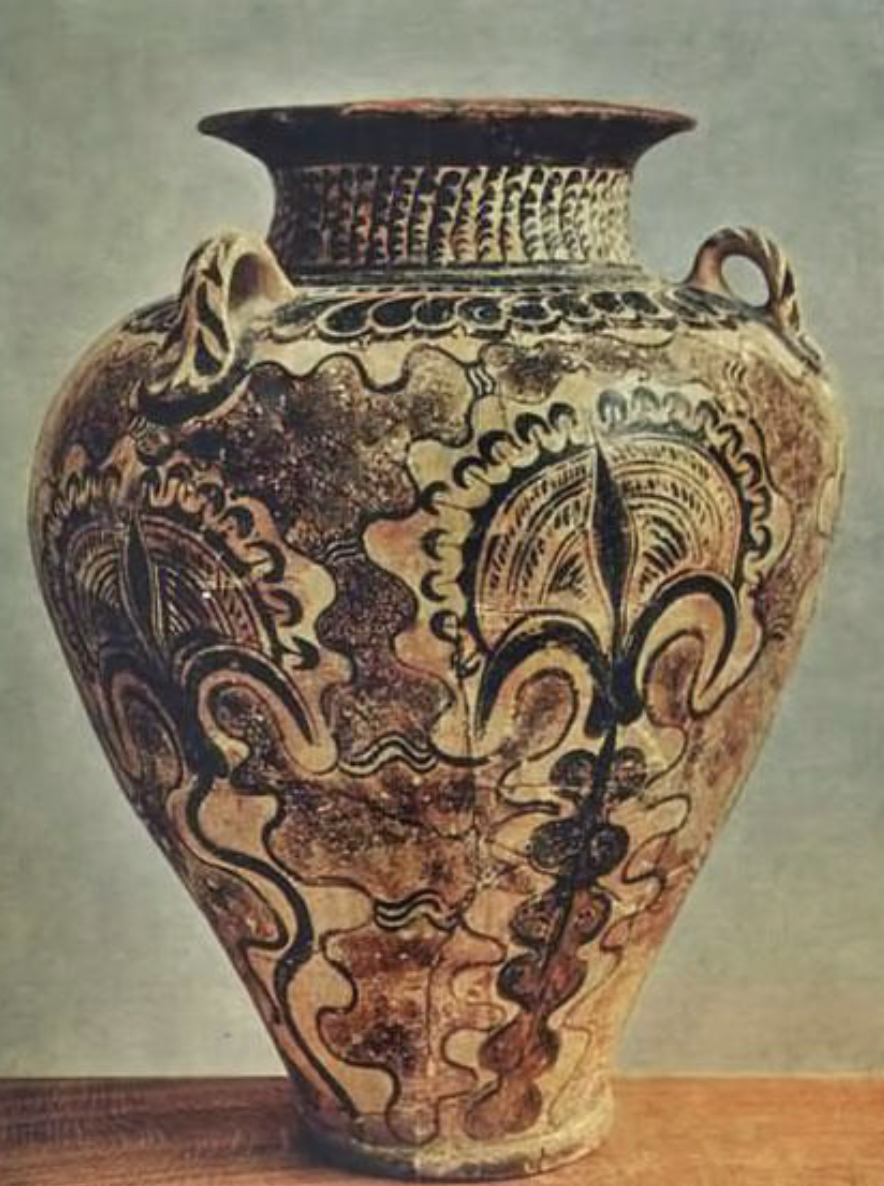
palace style minoan pottery
adapted from mainland greece aka mycenean pottery
shows presence of mycenenan people on crete
LM
cycladic wall painting
segment of ship fresco
west house, Akrotiri
late cycladic
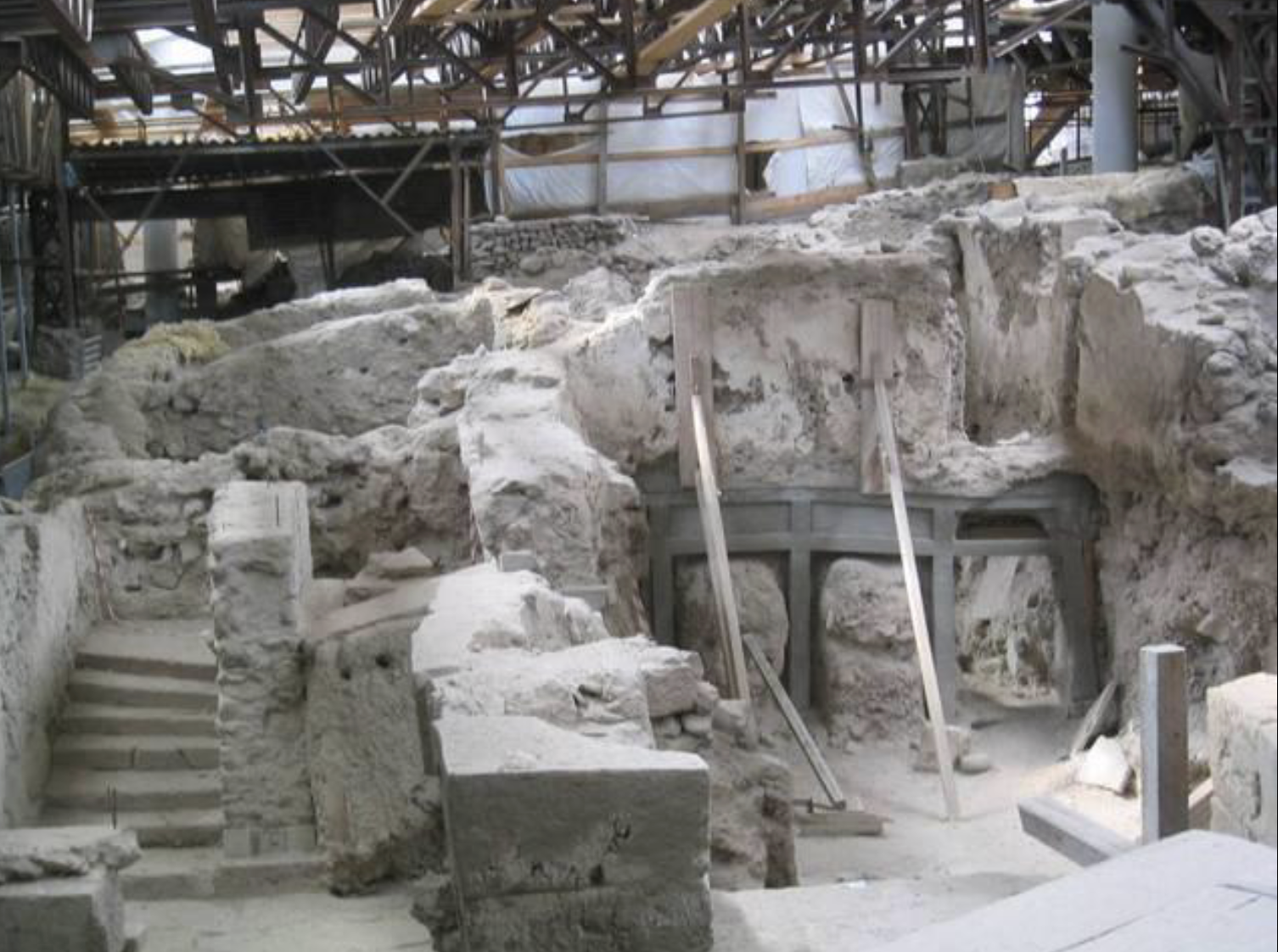
Akrotiri
agglomerative plan which means no central palatial structure
and the wall paintings show lotza minoan influence
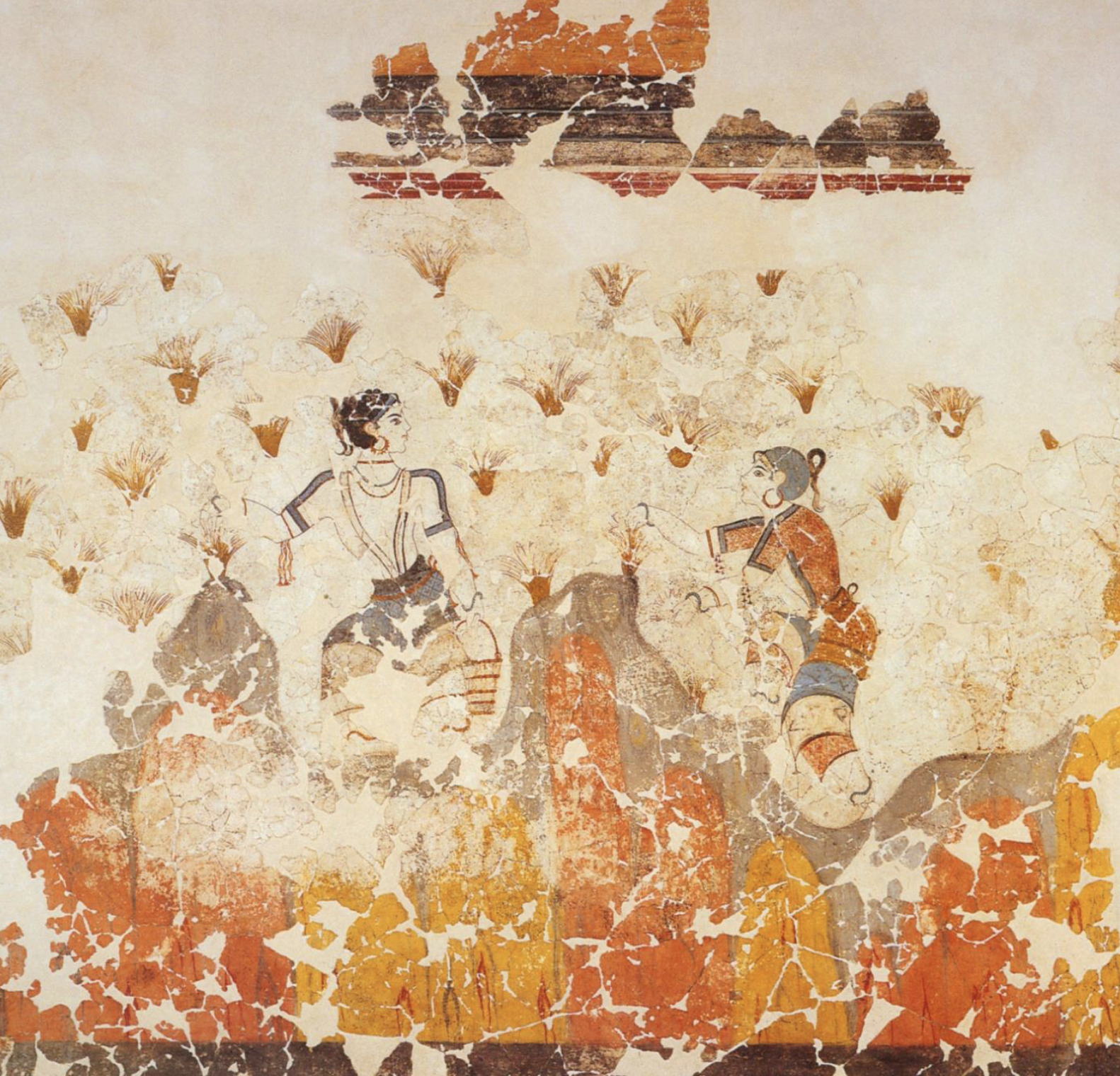
saffron gatherers
xeste 3
Akrotiri
LC

dagger blade
found in shaft grave in Mycenae
LH
remember lion hunt=leisure=elites=control over nature
triangle bodies so cunty we love those teensy waists
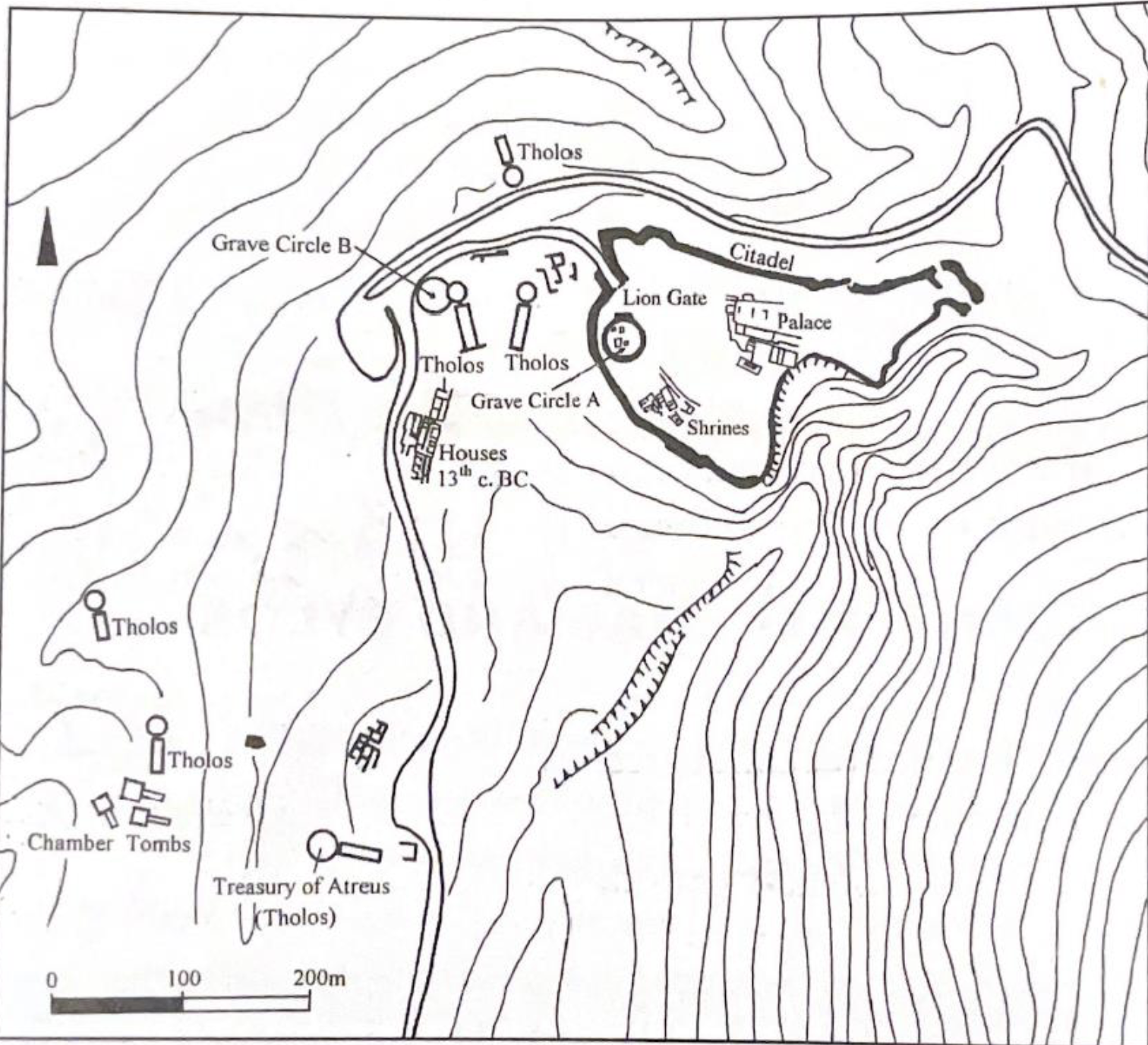
Mycenae
plan of the late bronze age citadel
grave circles a and b are here (remember orthostats) grave circle b is slightly older and a is slightly fancier
super cool stuff found in the grave circles like the mask of agammemnon which is made of gold and not used dagger blades and both of those are LH
the lion gate= LH= vibes of protection and violencebut could be griffins which is reminiscent of knossos
the fucking treasury of atreus is here too
lion gate
cyclopean masonry
LH
could potentially be griffins? think of knossos throne room
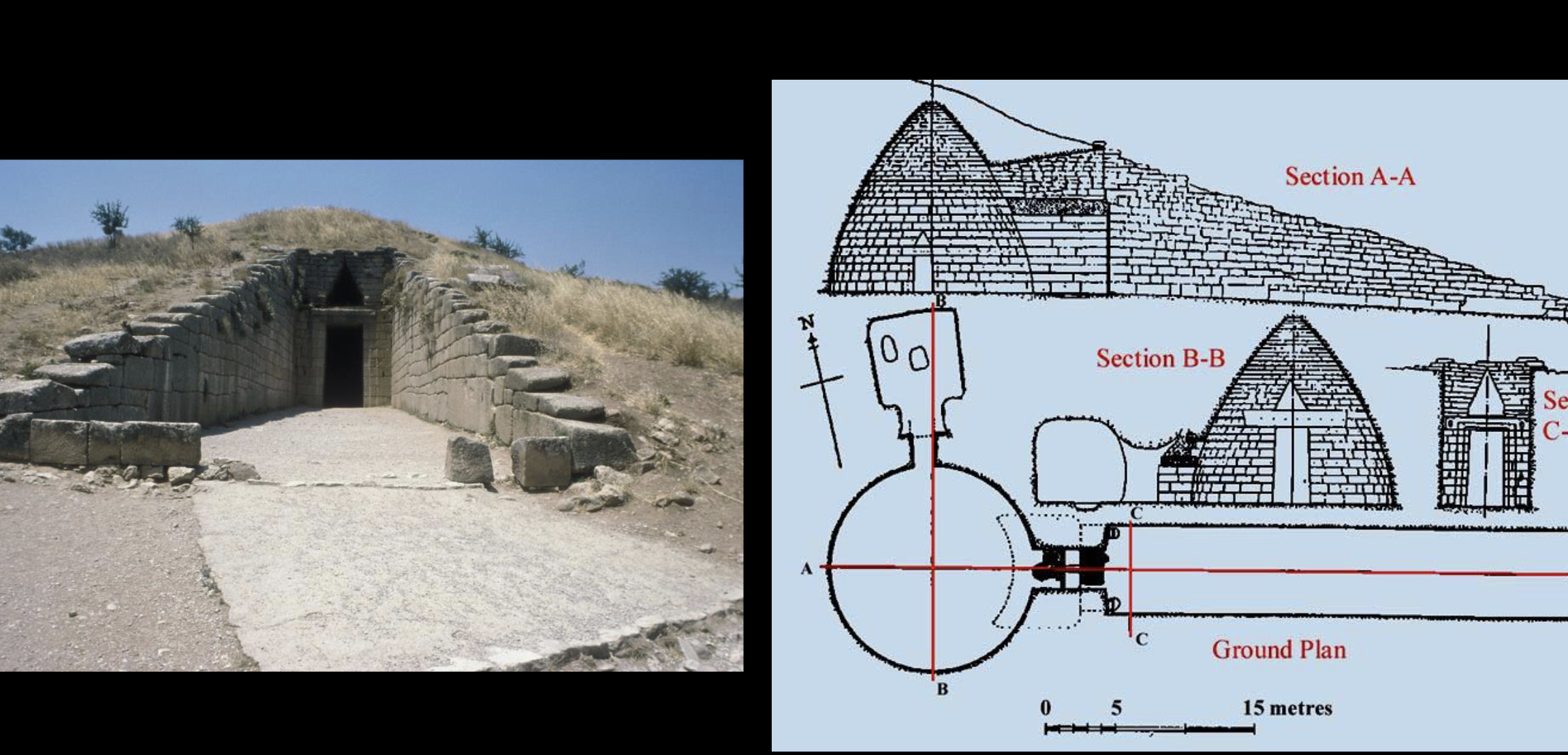
treasury of atreus
Mycenae
LH
NOT a treasury but a huge tholos tomb
dromos=long hallway
ritually significant
heavily looted
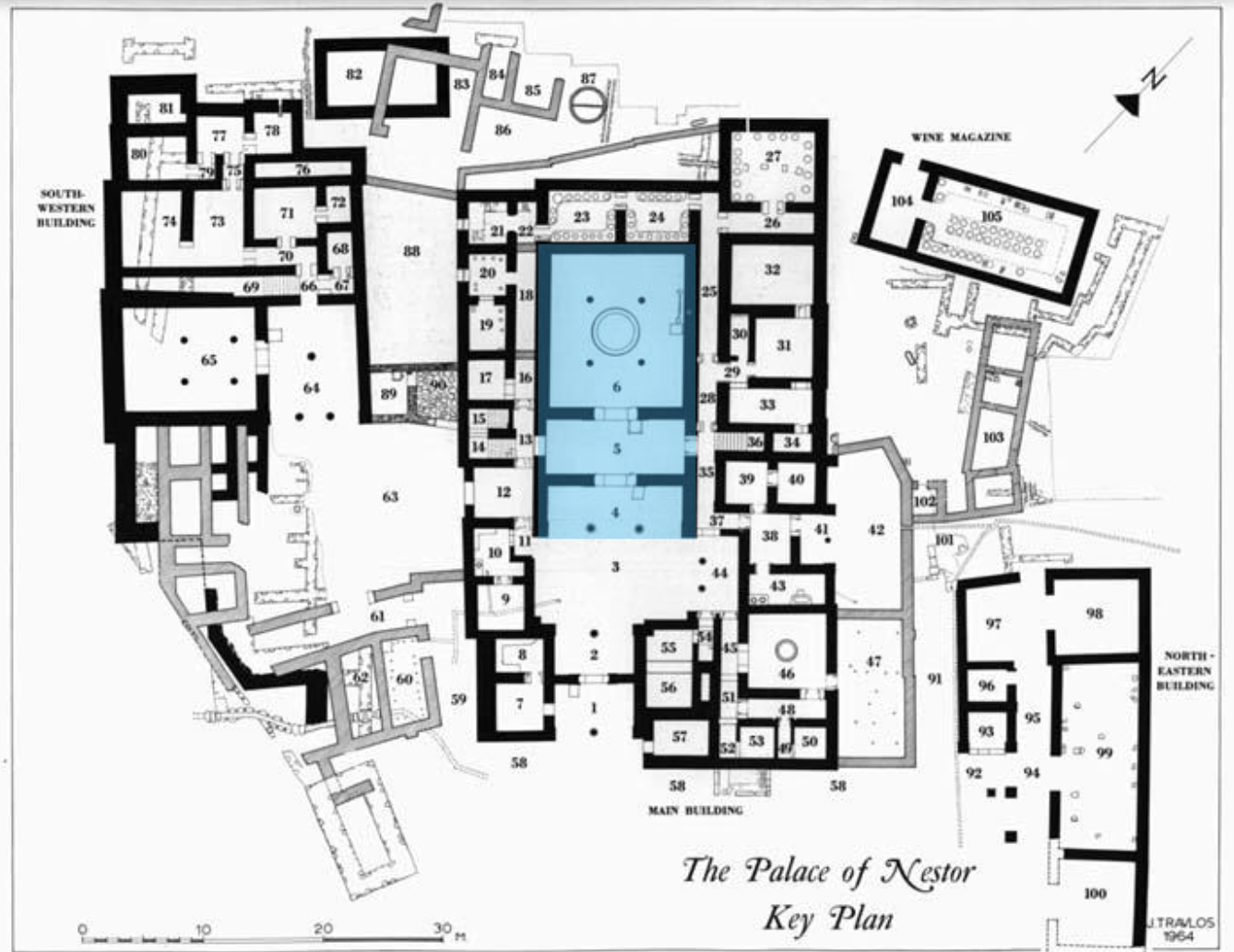
pylos megaron
has tripartite plan,
similar to EH longhouses and MH megara in this way
has best preserved mycenean palace
magaron=classic mycenean they love a big room with a hearth
tomb of the griffin warrior is in pylos
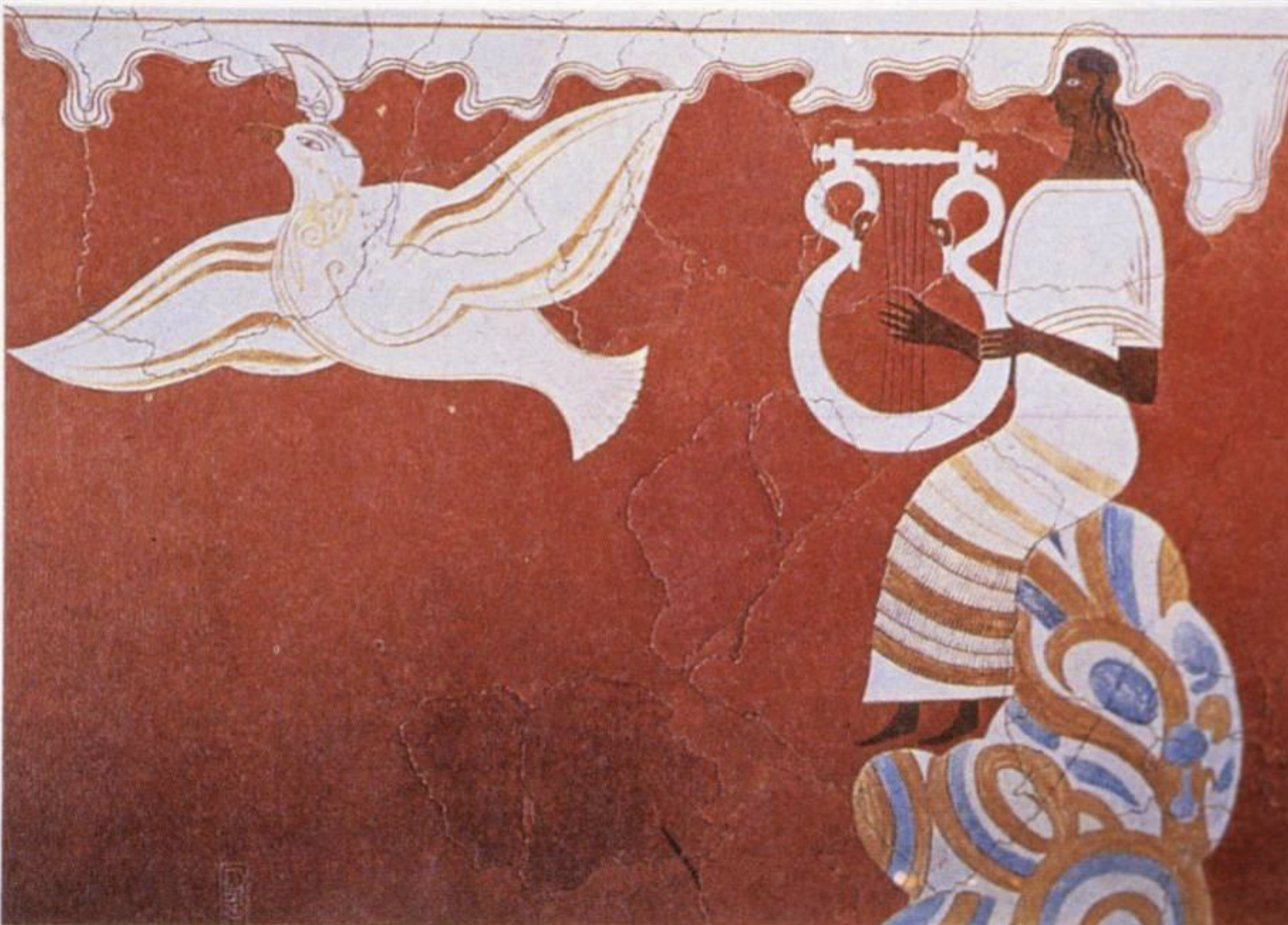
fresco at pylos
LH
gives similar vibes to minoan knossos frescos
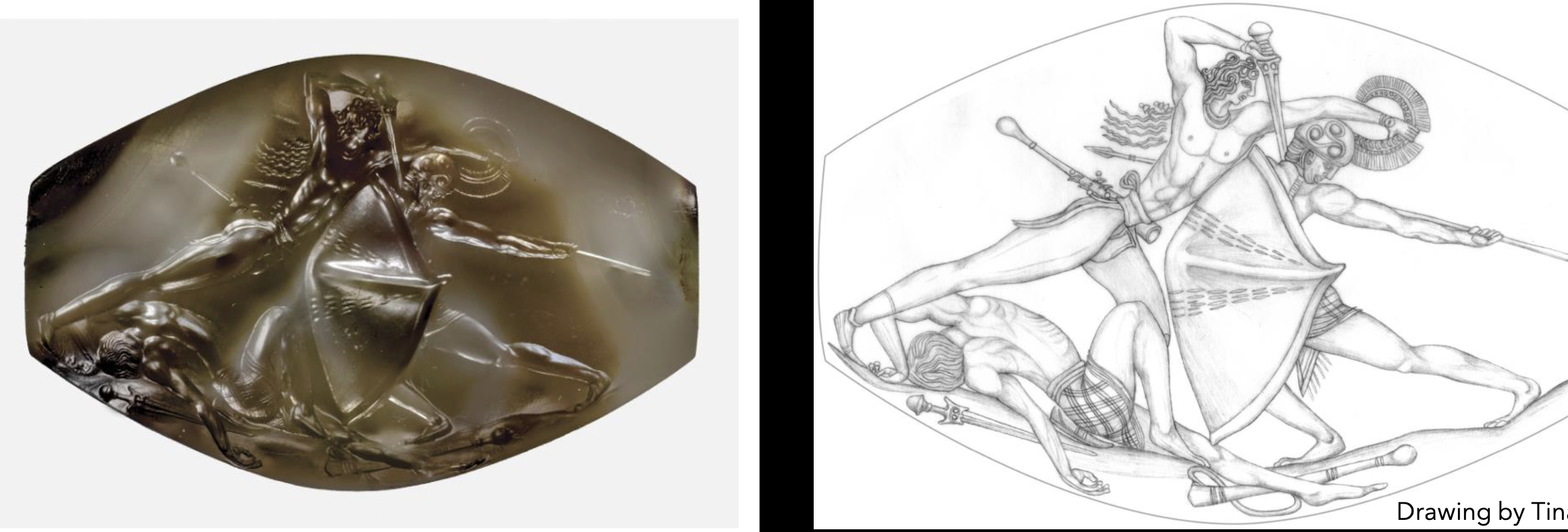
combat agate
found in tomb of griffin warrior
LH
Pylos
mycenean means fighting and looking good
minoan influences
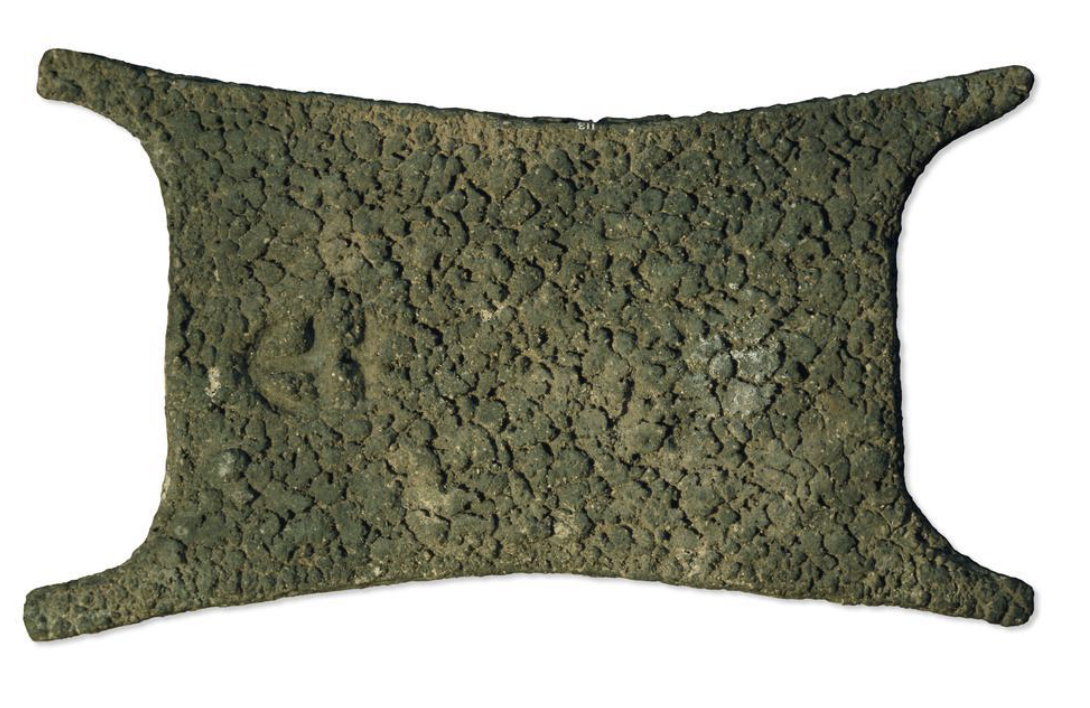
oxhide ingot
this means its a cogger ingot that was a convenient shape for shipping - trade of raw materials
tell/hoyuk/magoula
the mounds left behind
Minoans vs Myceneans vs.
Linear A vs Linear B
Linear A doesn’t appear to be connected to Greek not even the earliest form and hasn’t been deciphered while linear B was deciphered by arthur evans and is an early form of greek
light well
minoans at knossos strategically placed
Kamares Ware
Minyan Ware
Polychrome painted Minoanizing ware
Horns of consecration
knossos
minoan
floral style vs marine style vs palace style
Gournia, Crete
Mount Juktas
Herodotus
Akrotiri
Pylos
Heinrich Schliemann
Kopaic lake
Mycenean
draining it was feat of Mycenean hydroengineering
gla is still there but has no lake and is now farming land for the myceneans
Mask of agamemnon
uluburun shipwreck
evidence of trade networks
pottery important bc of what it was holding on the inside like wine or oil
had ingots and gold and copper and ivory and precious stones and egyptian artifacts
off the coast of turkey
“club of the great powers”
kings who called one another brother and exchanges of gifts and women (except egyptian princesses)
so egypt would send gold and other states woudl give craft goods/horses/copper
Cyprus
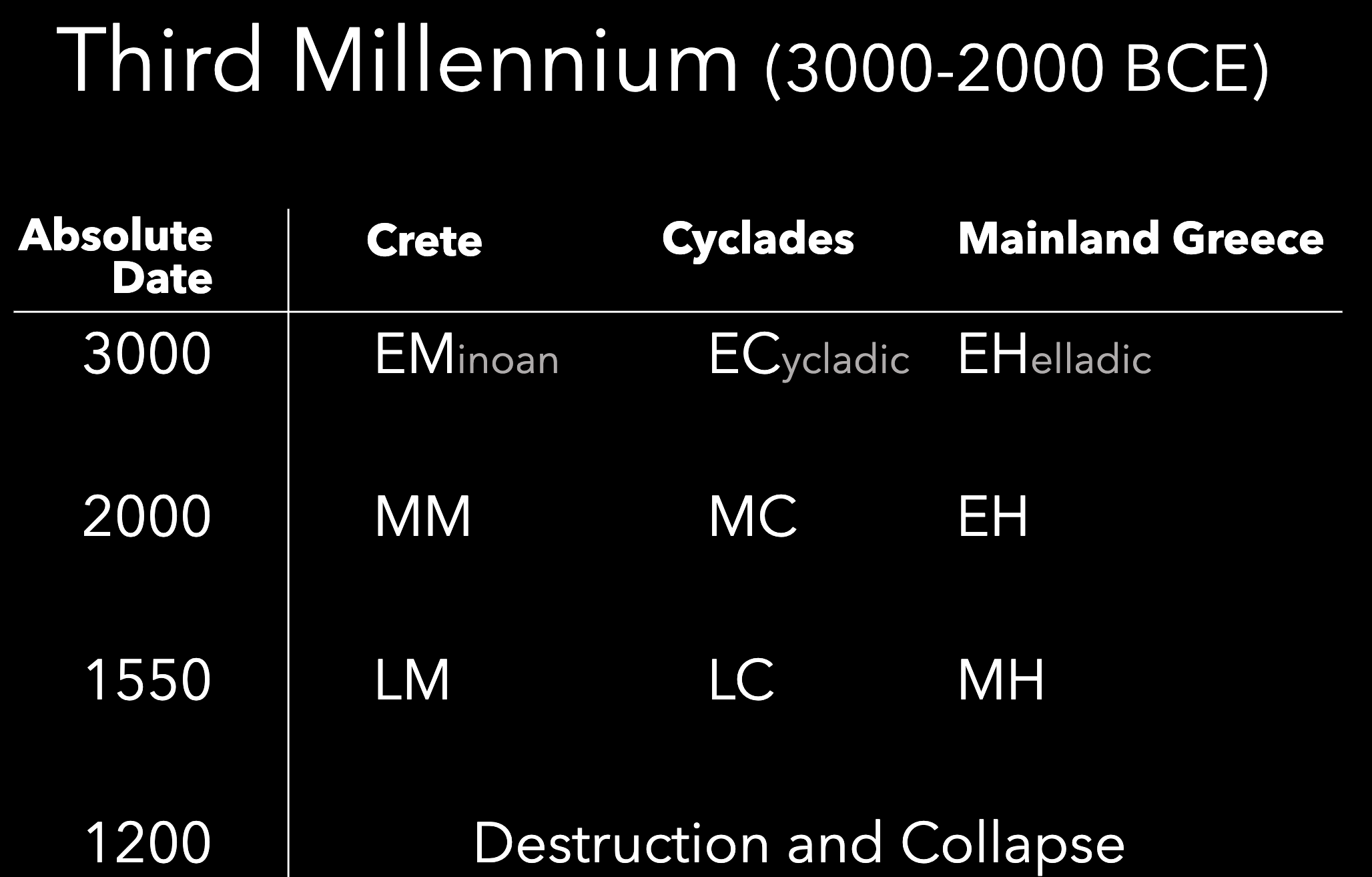
know this!
time periods are important!